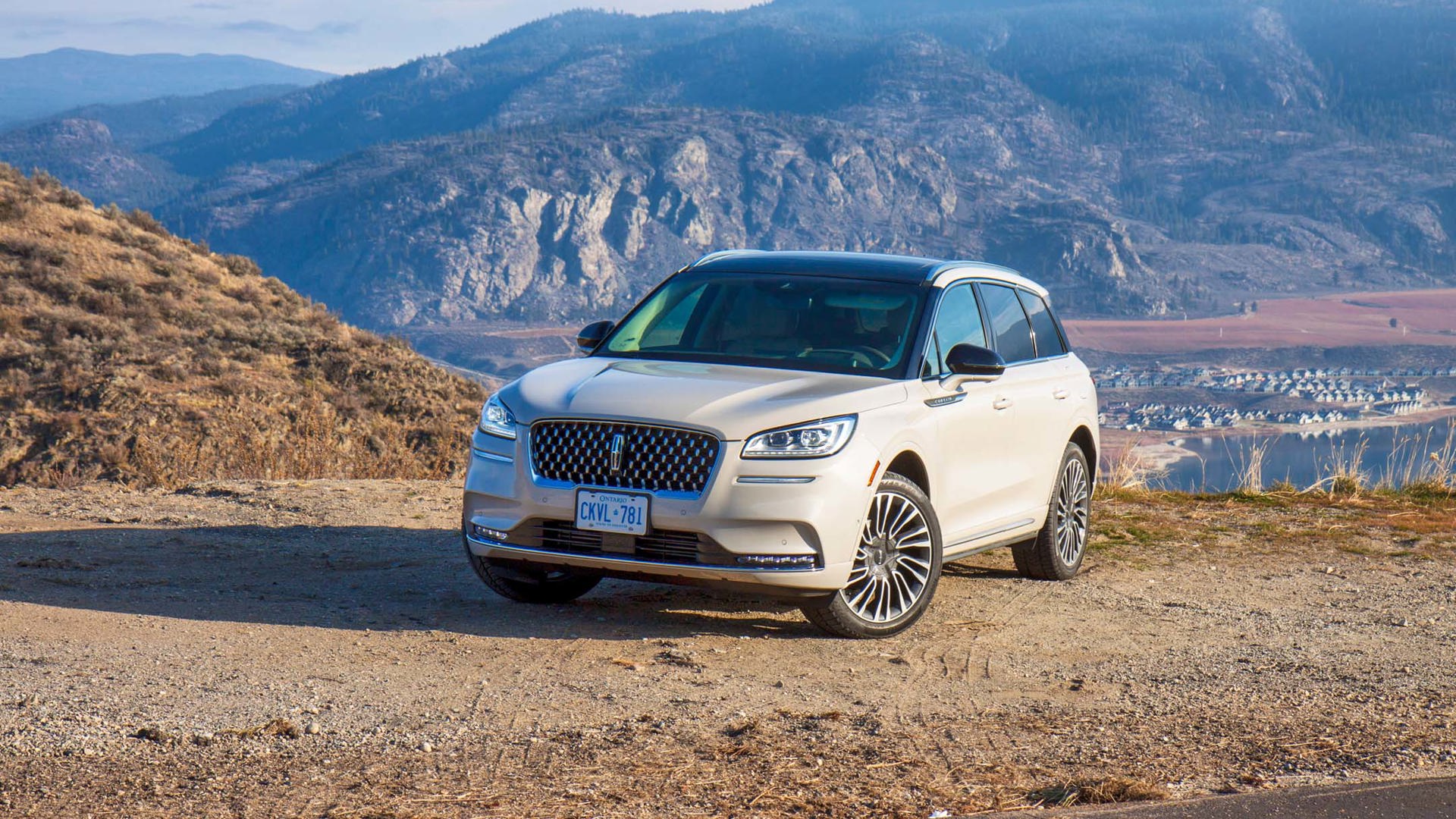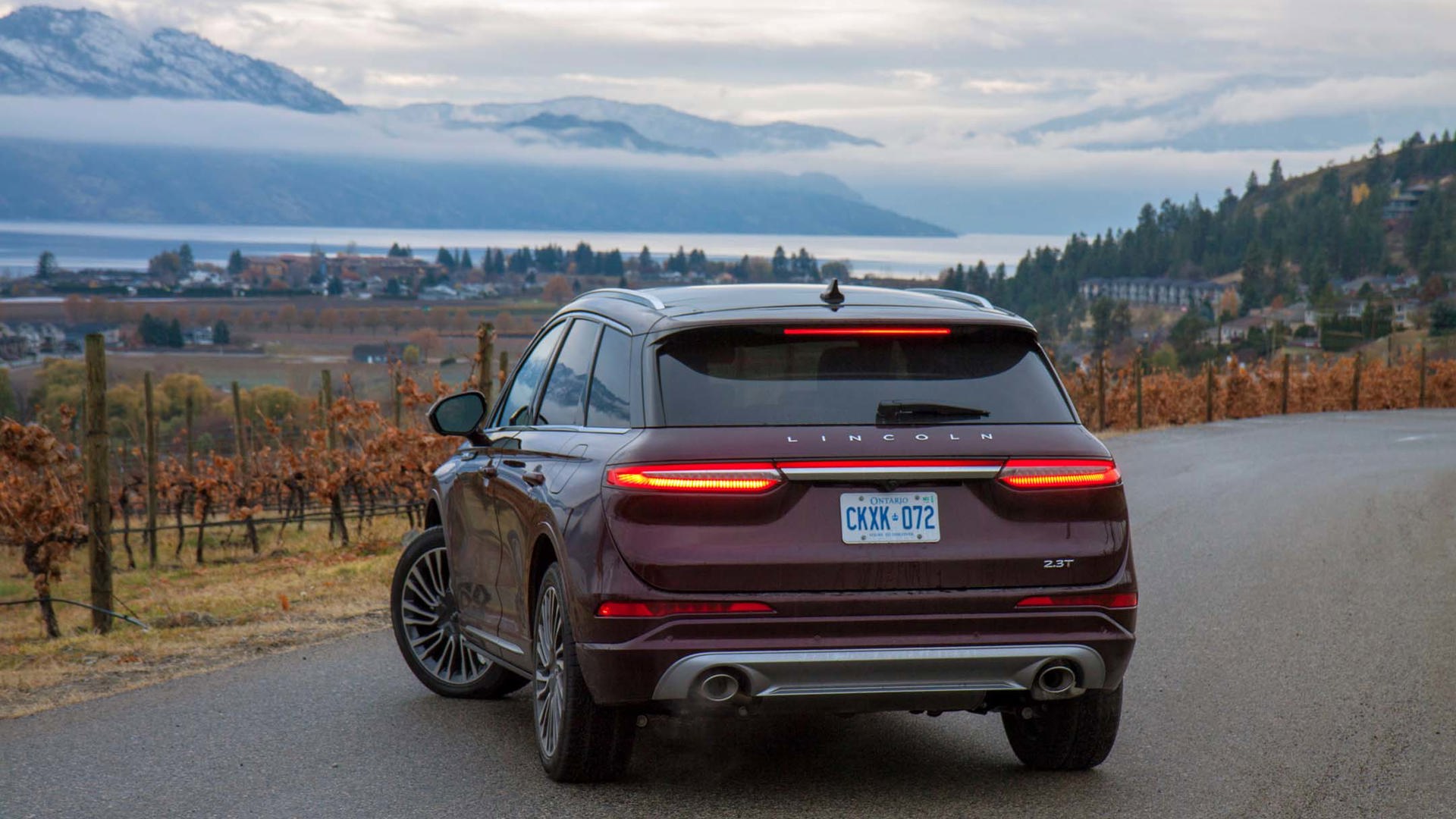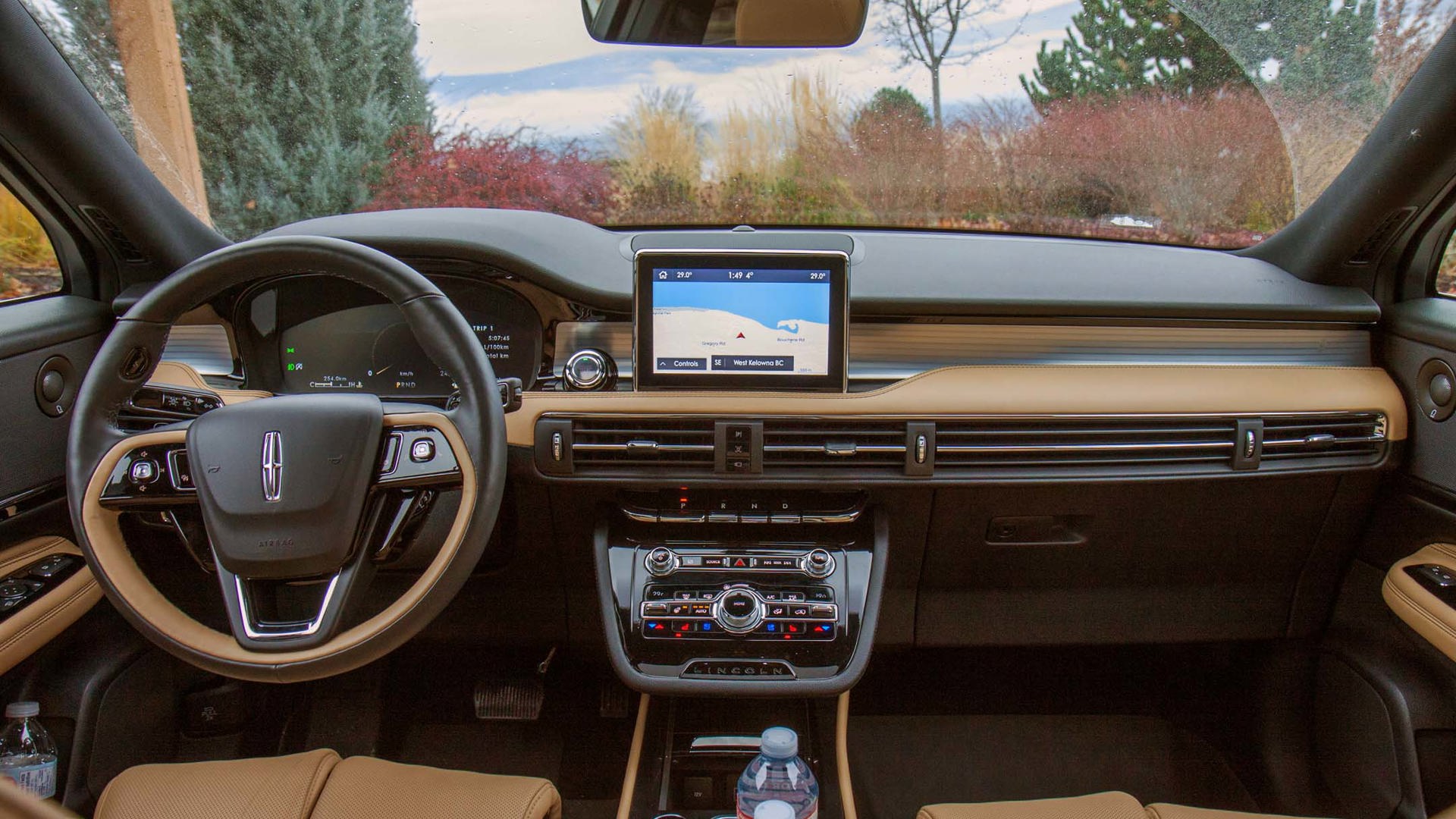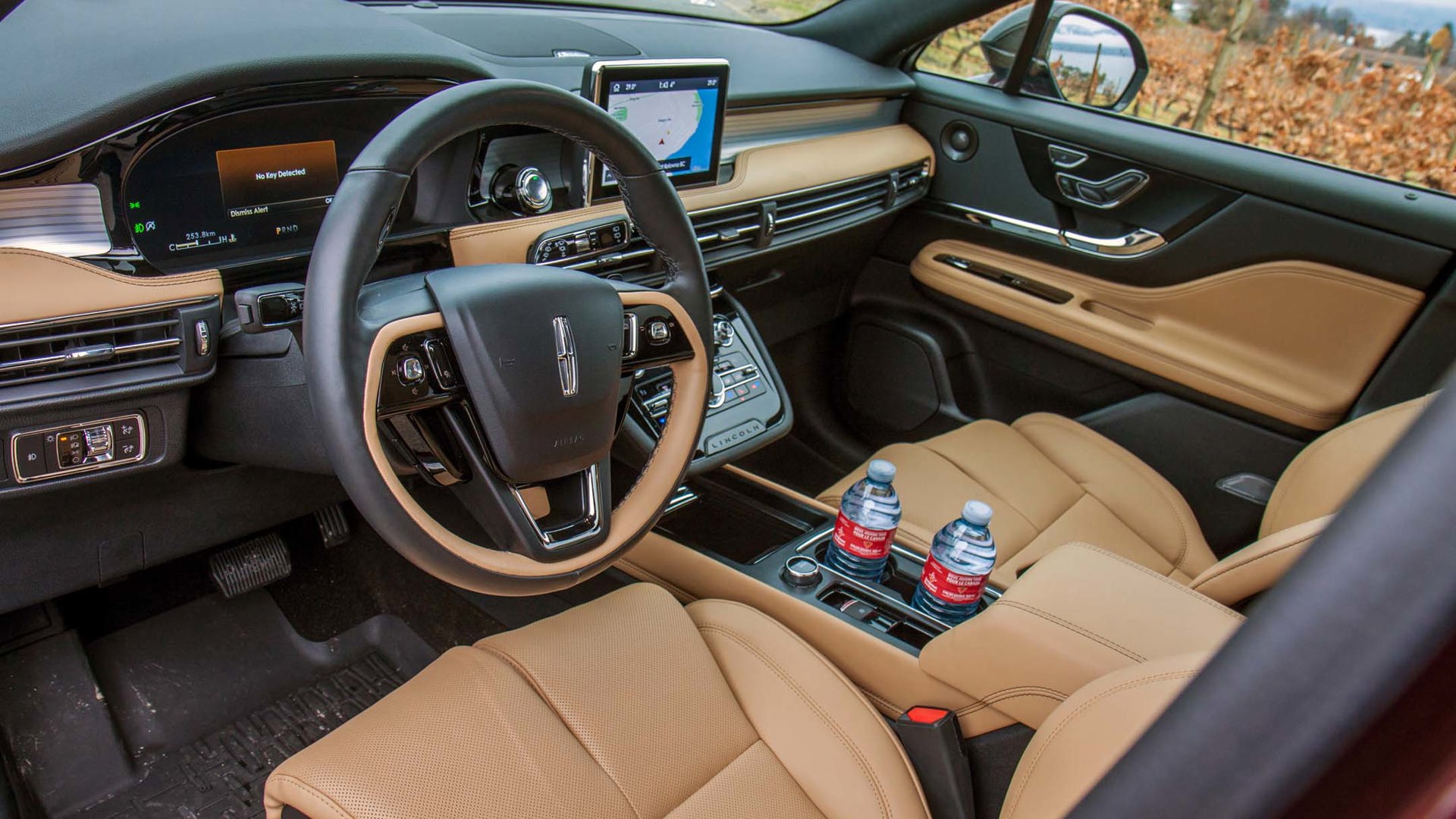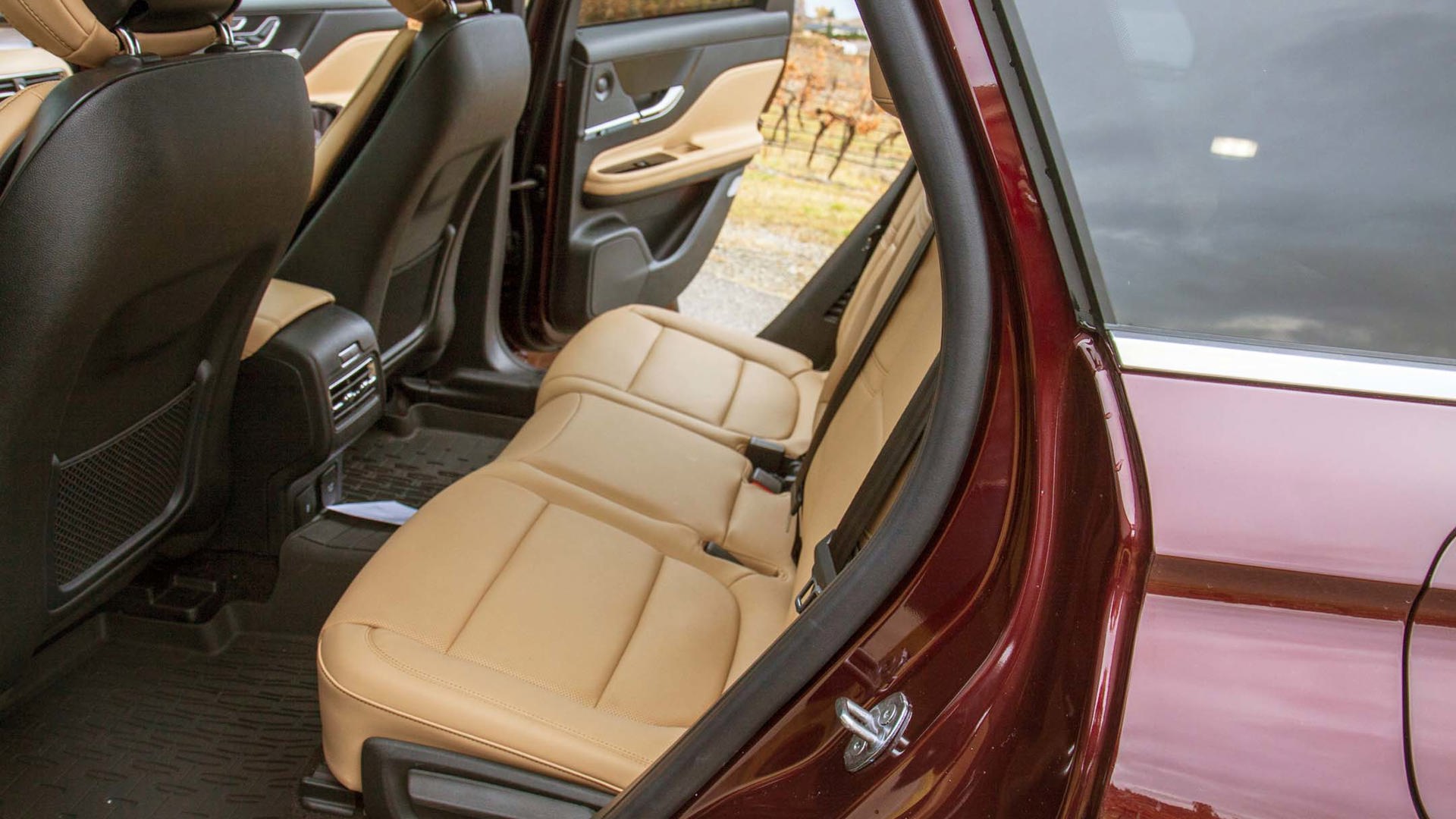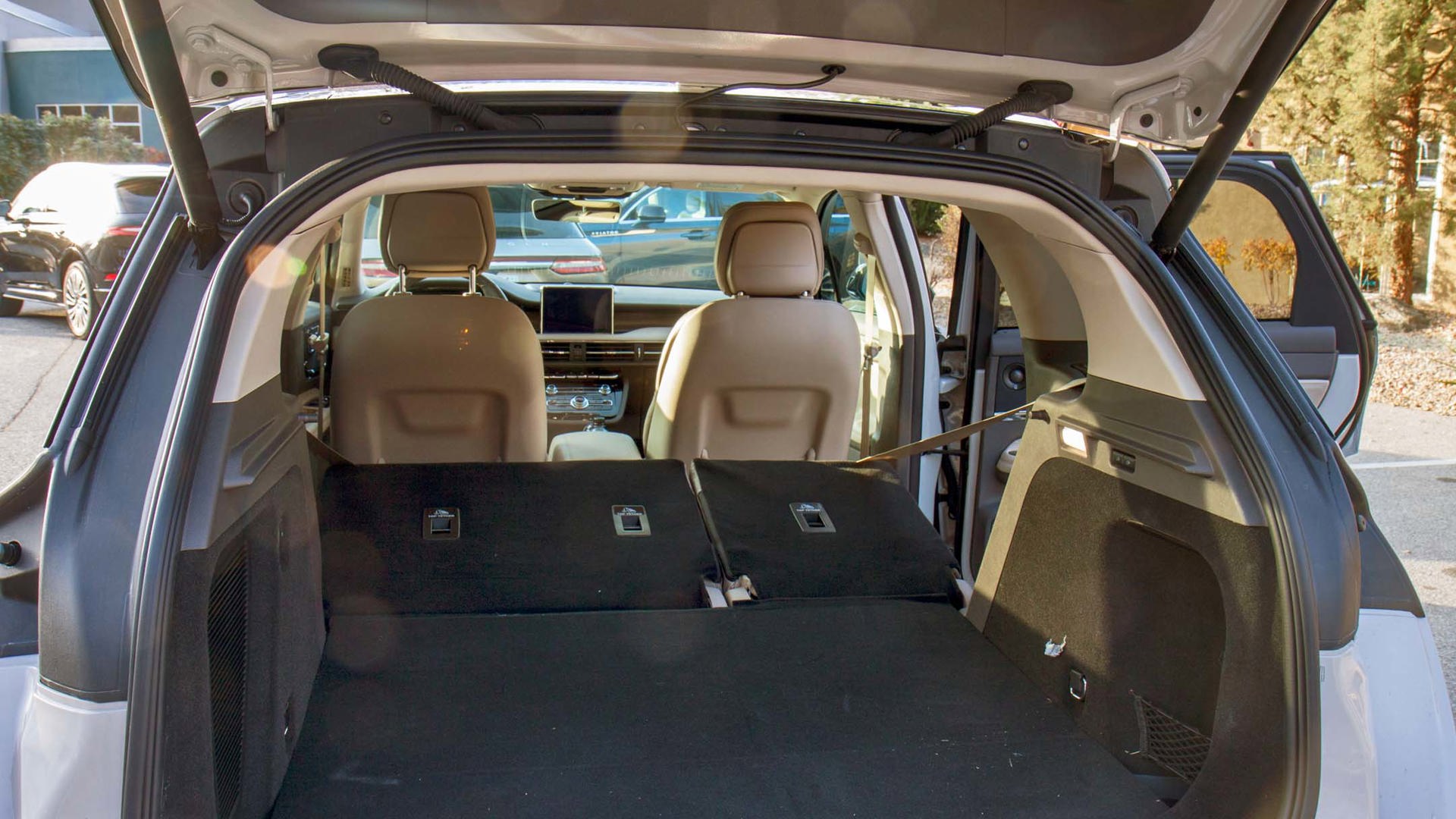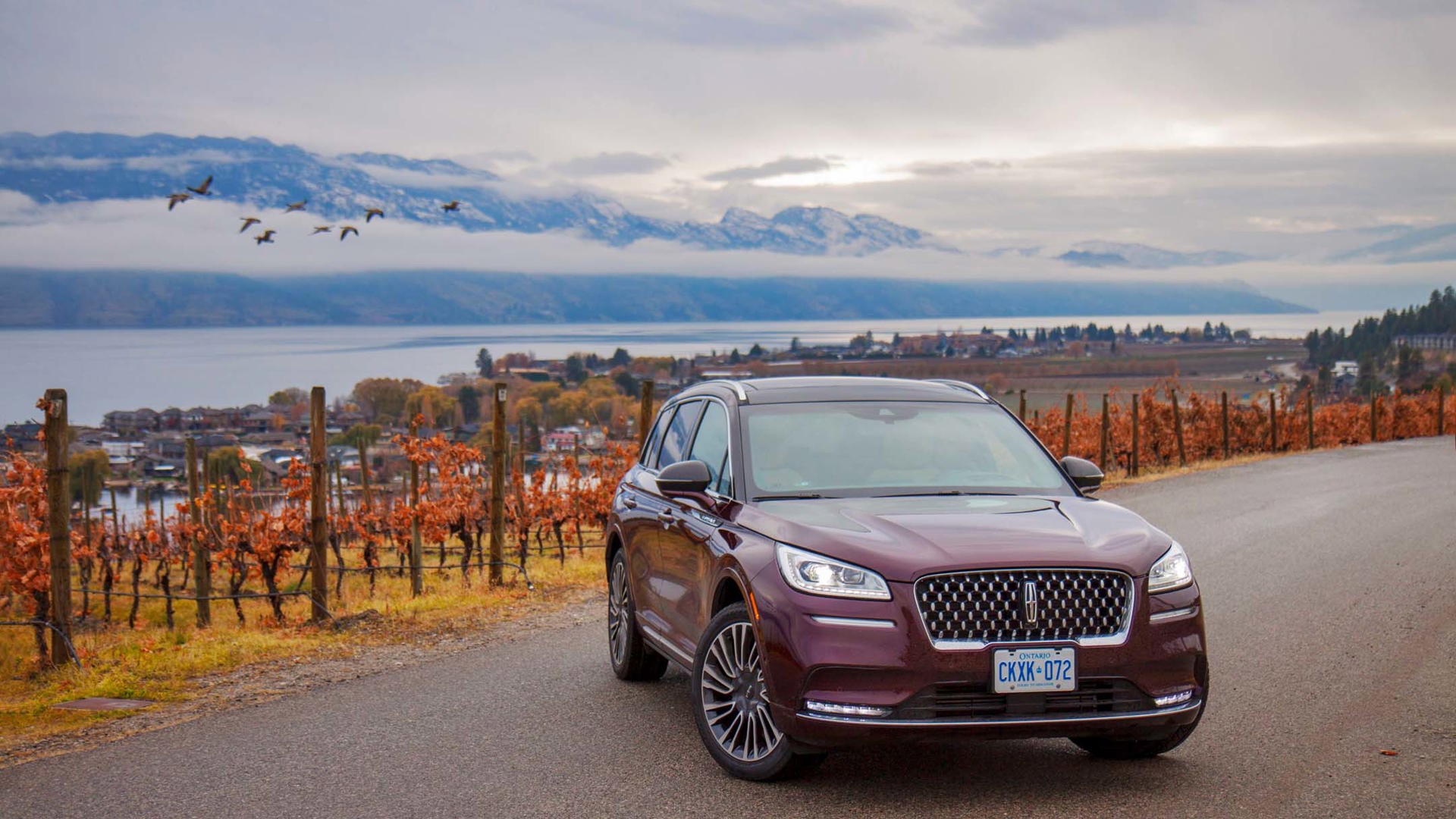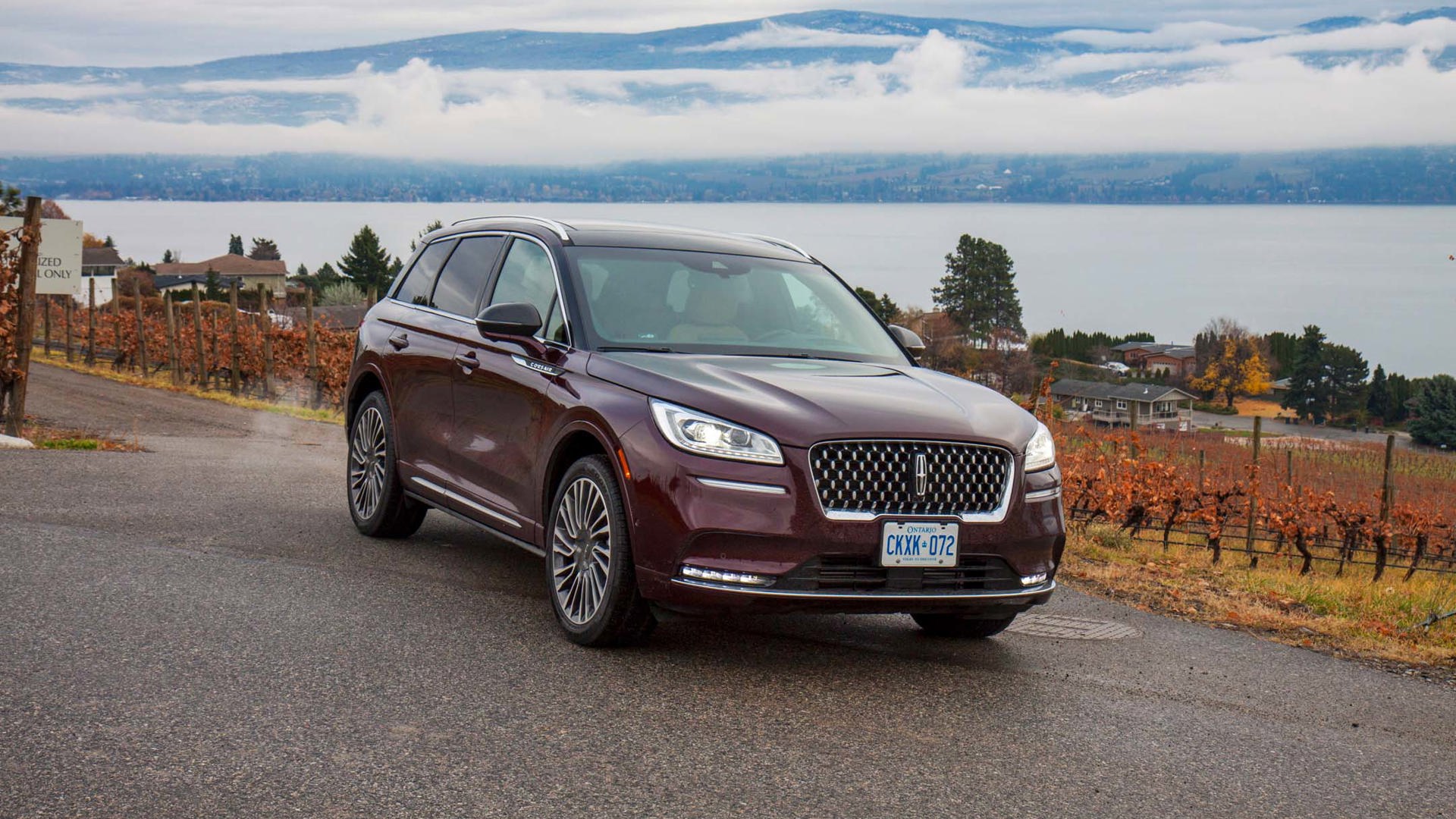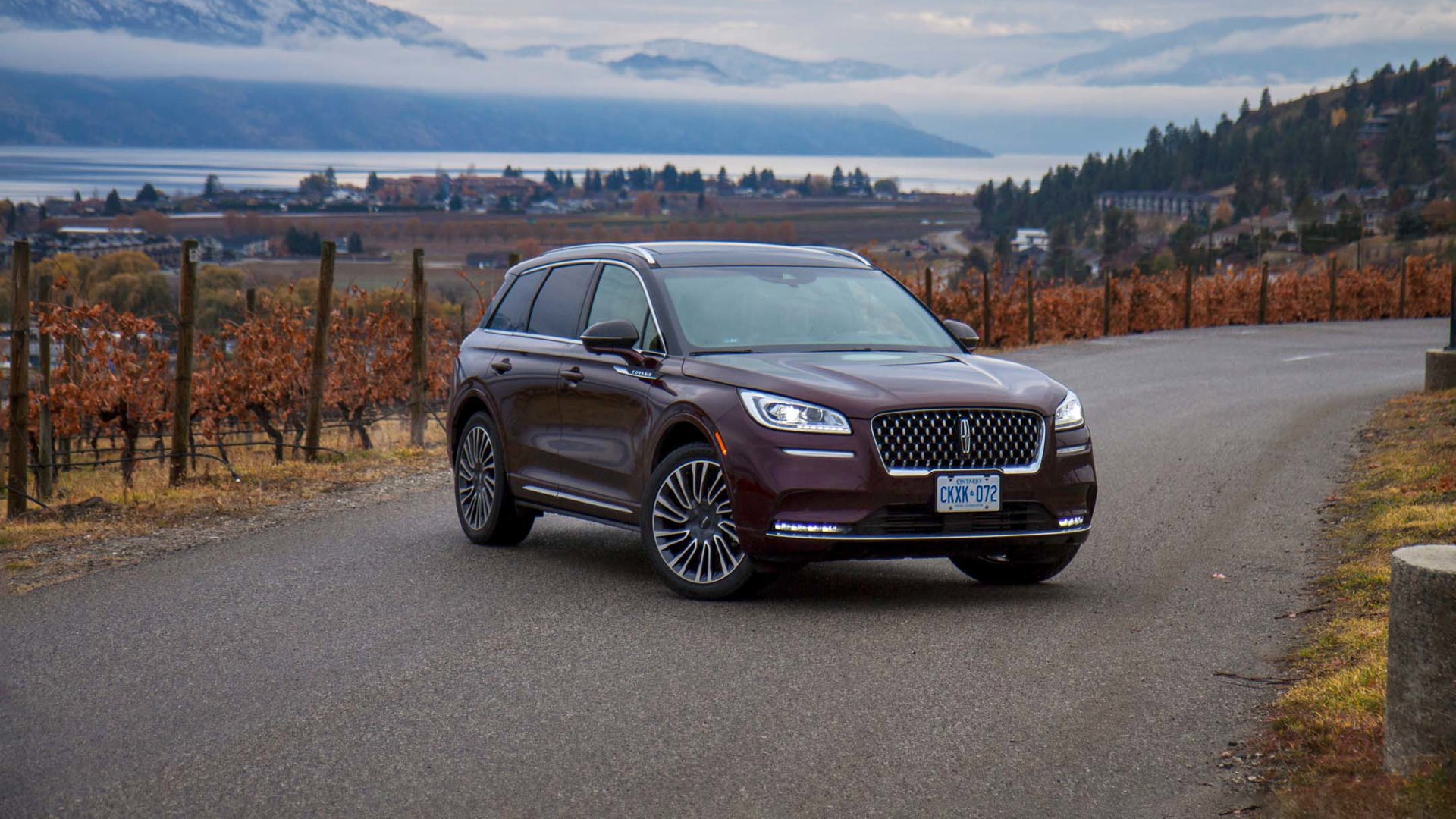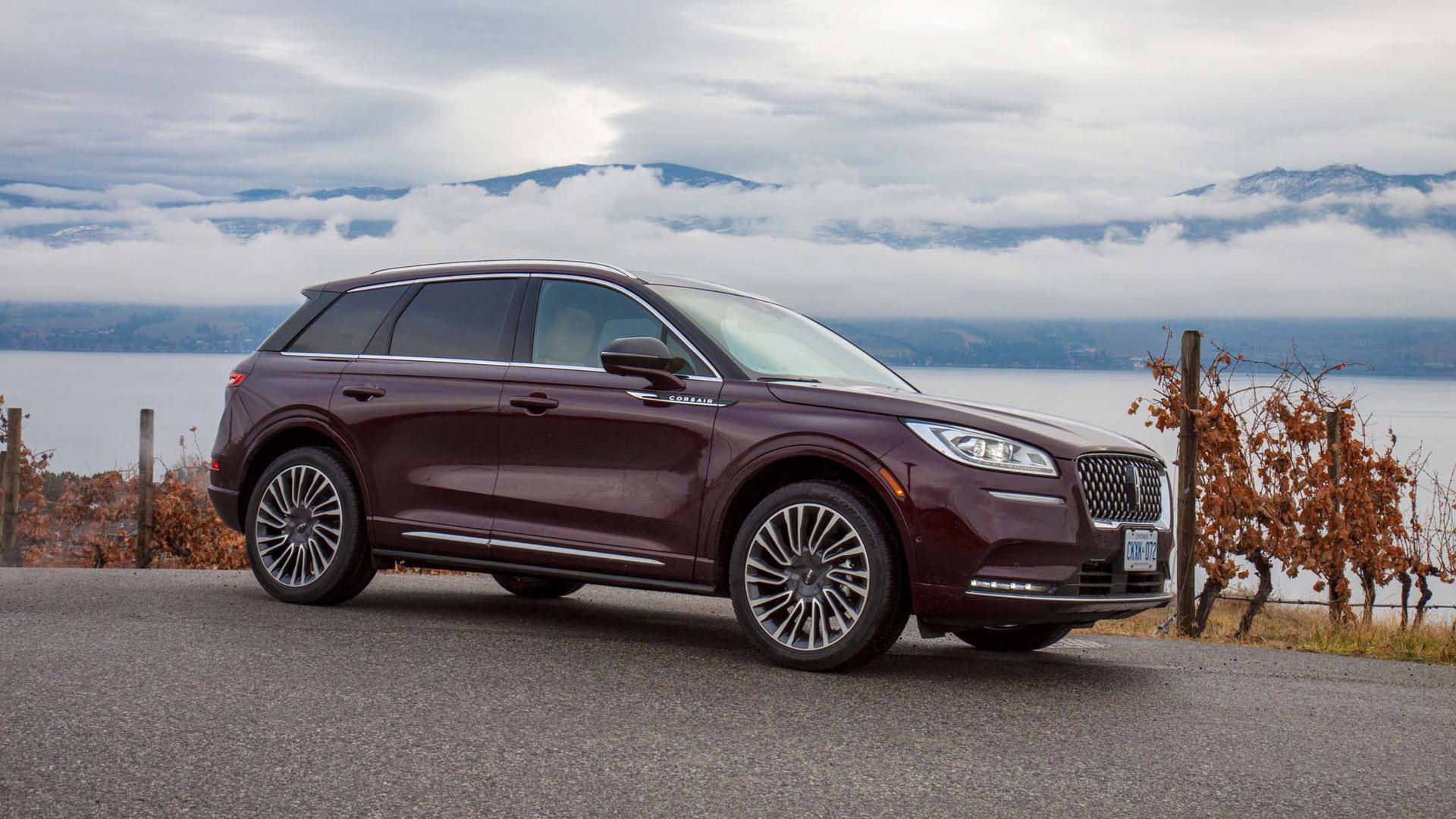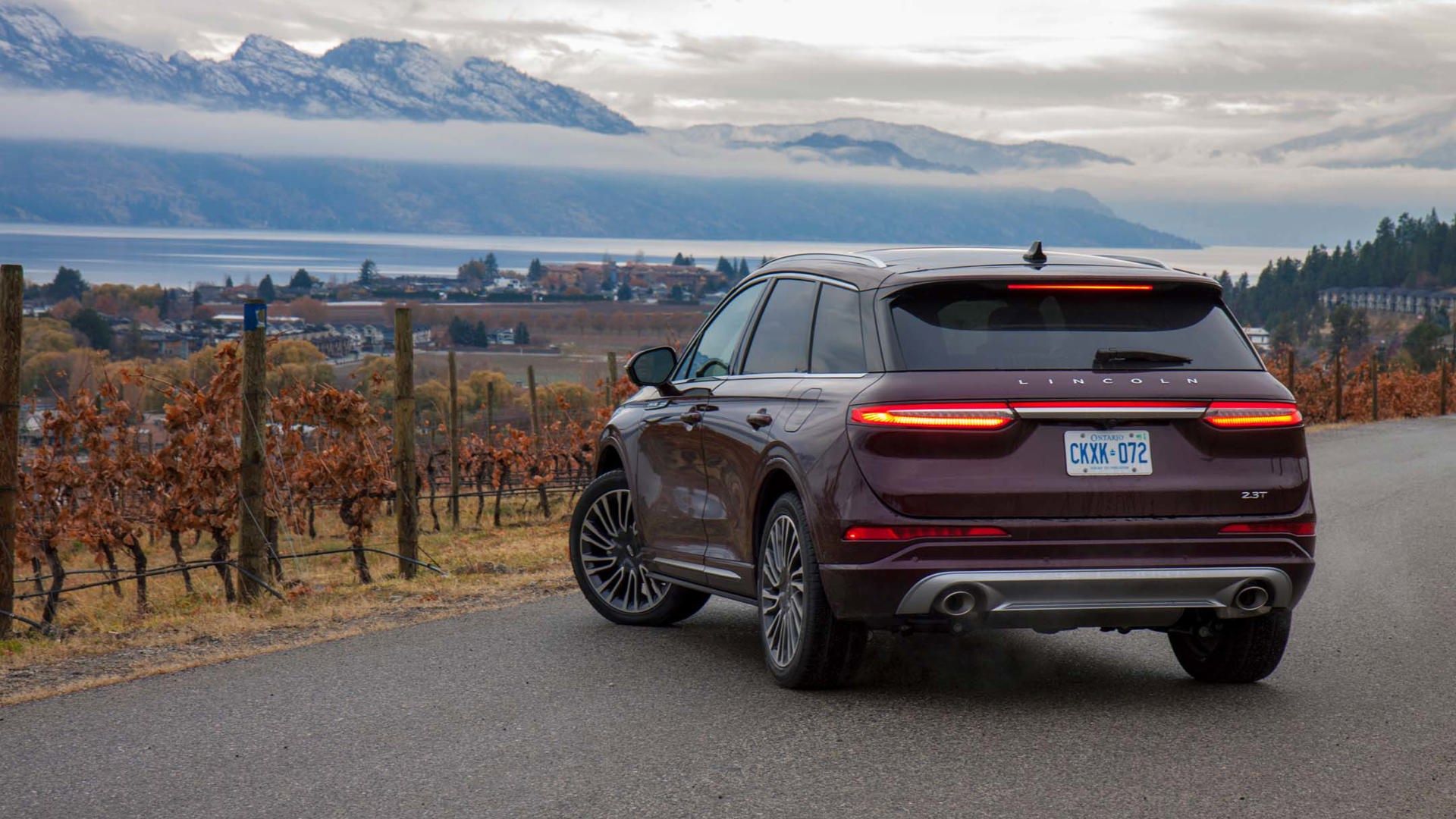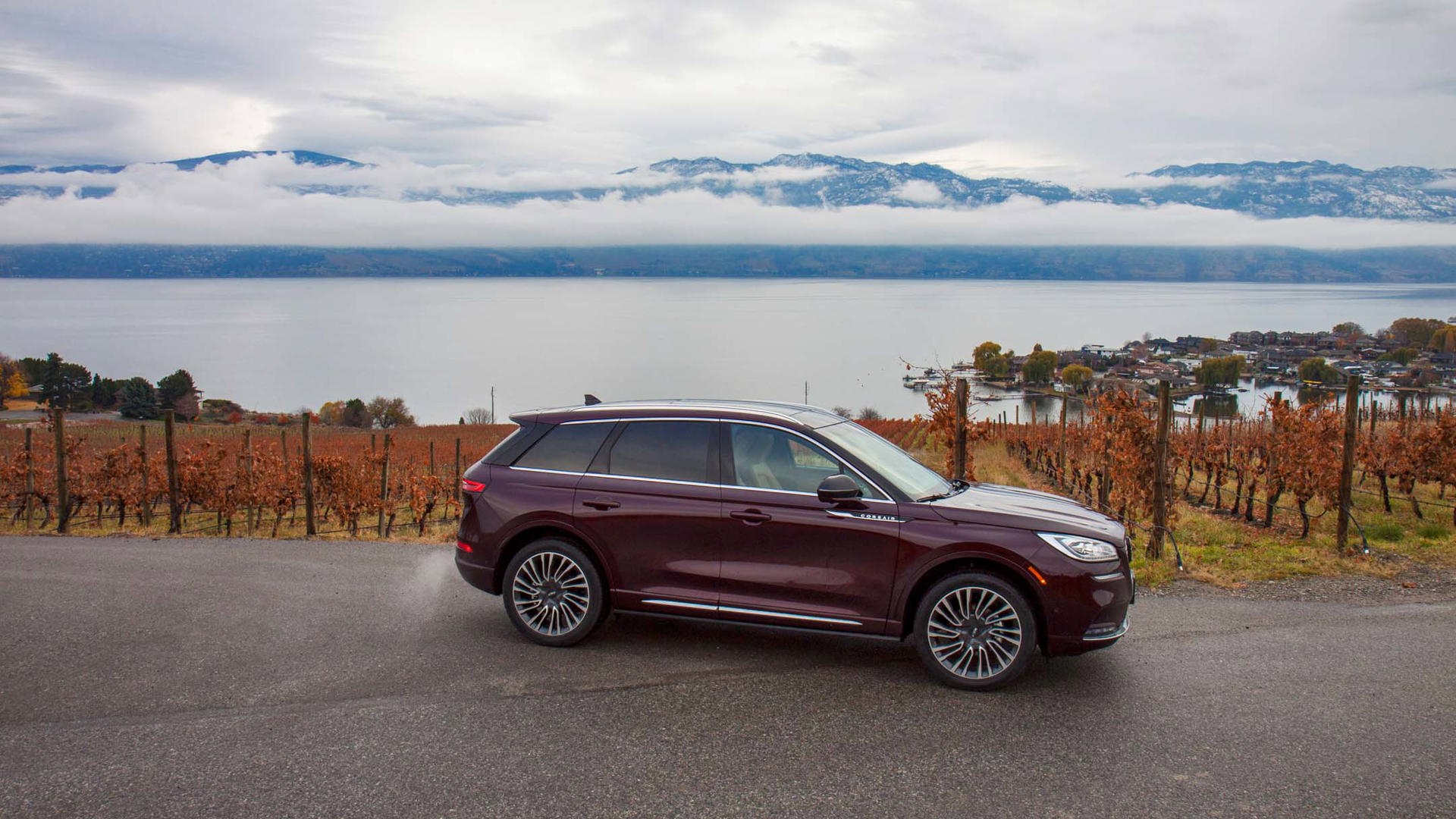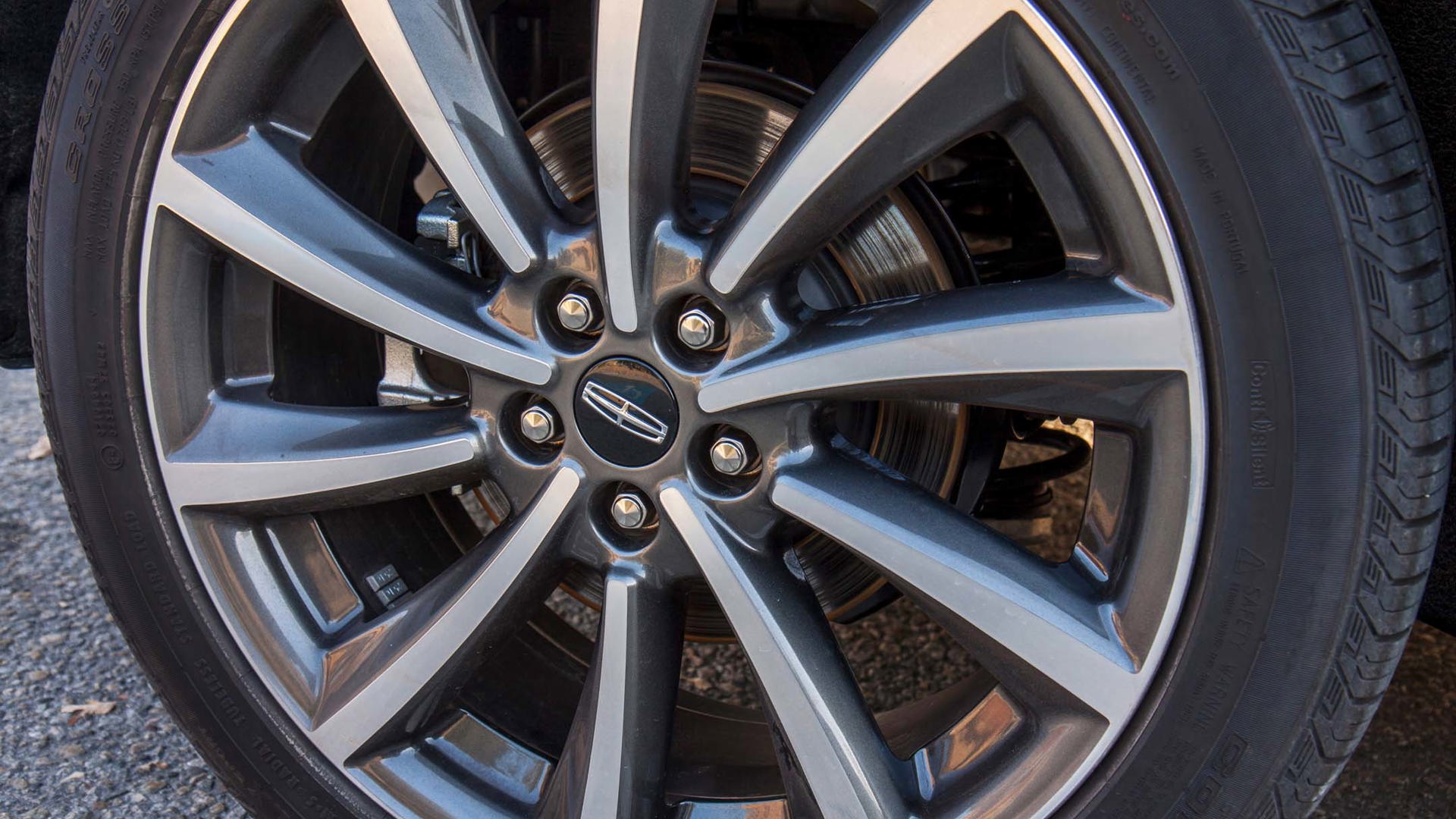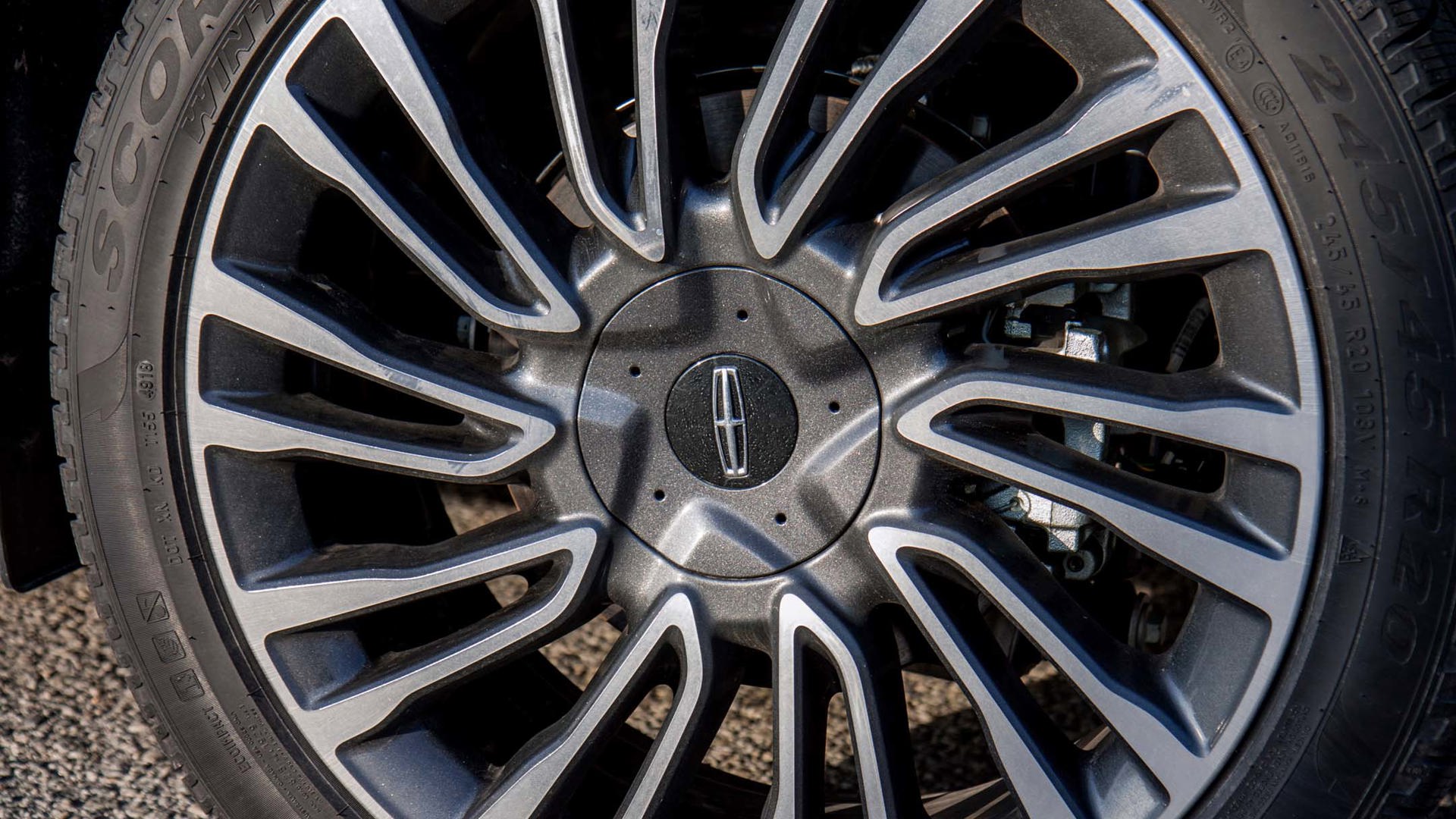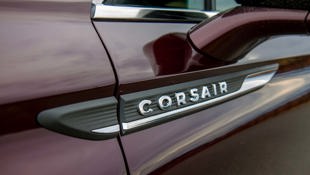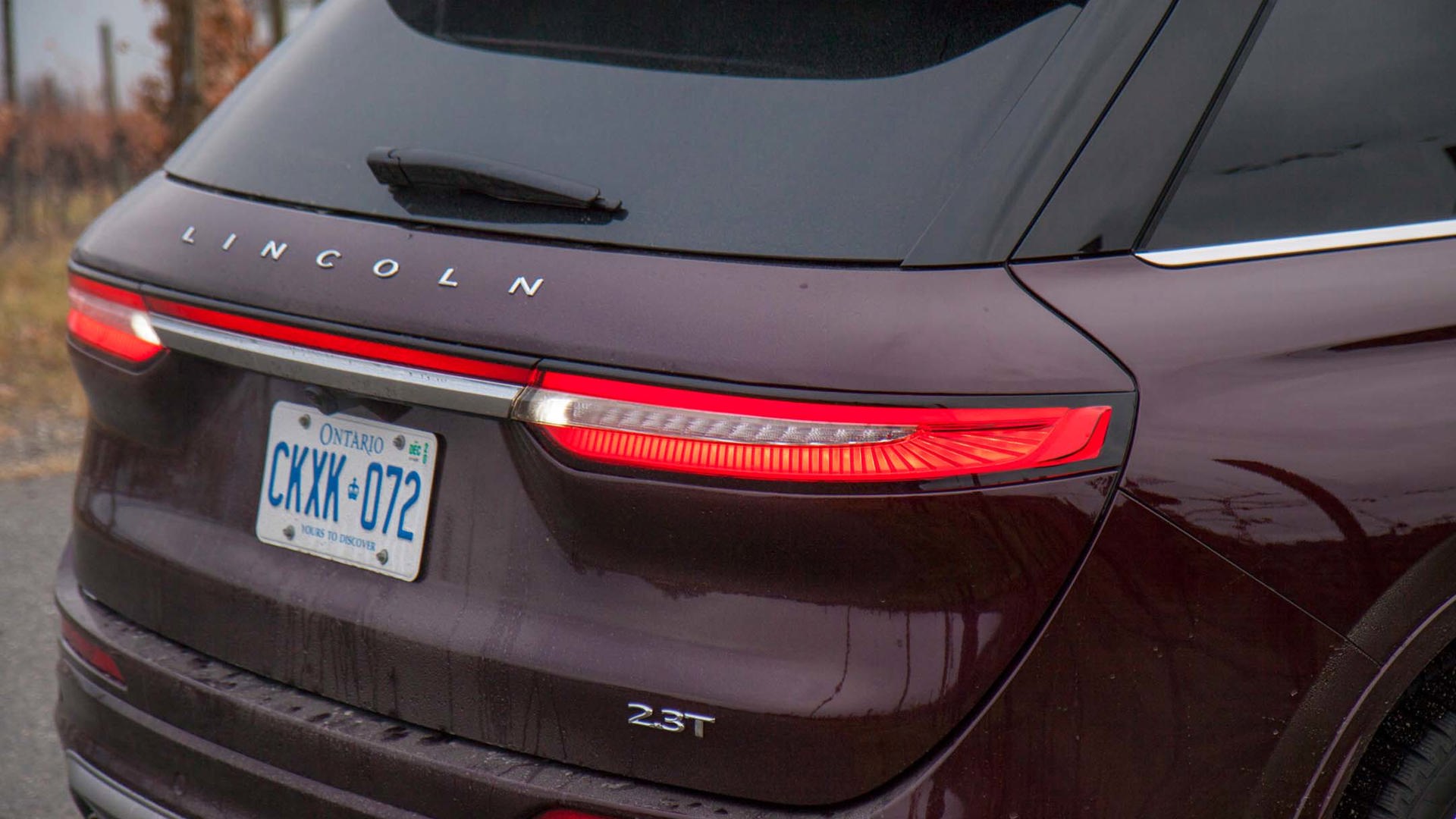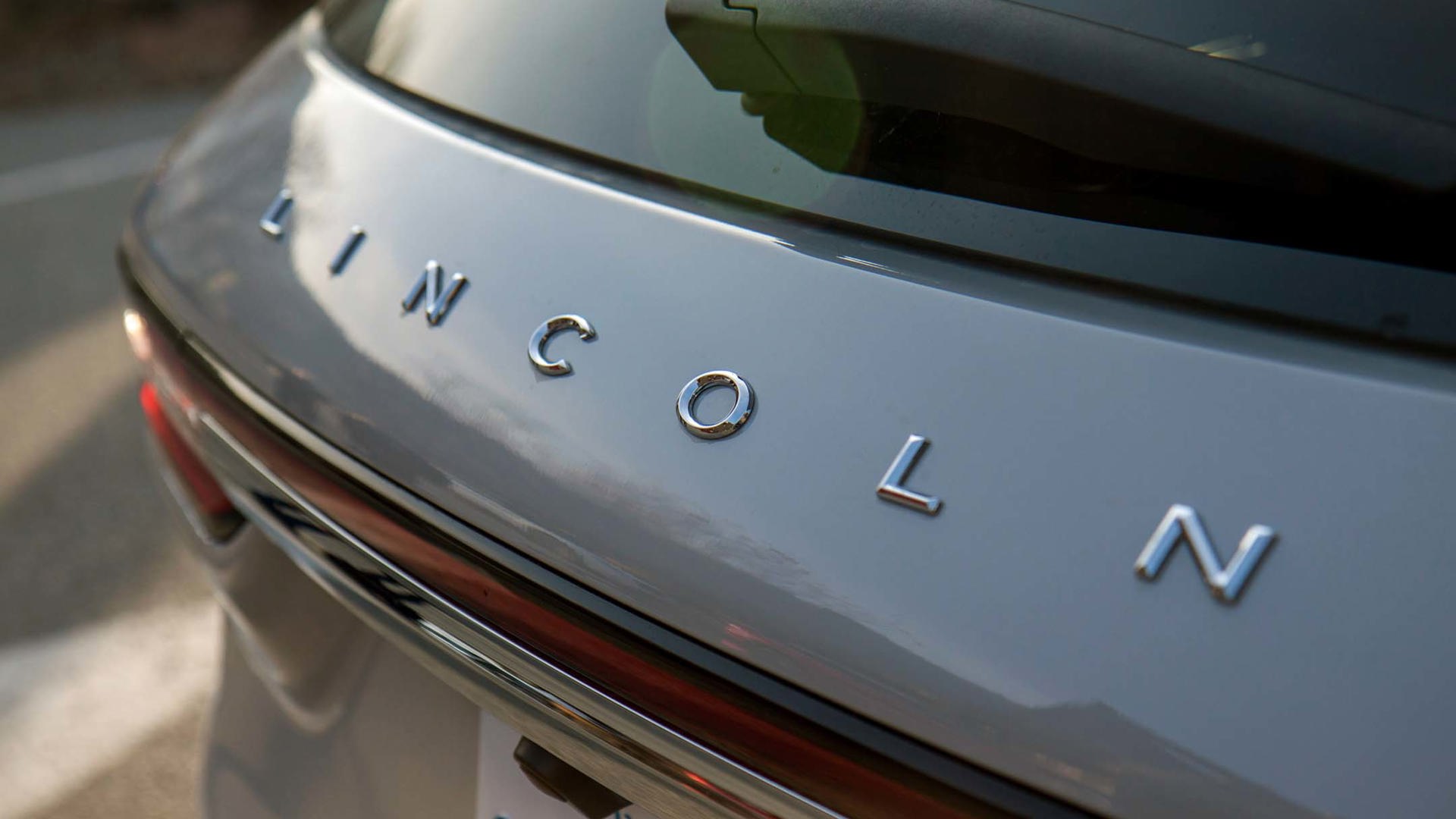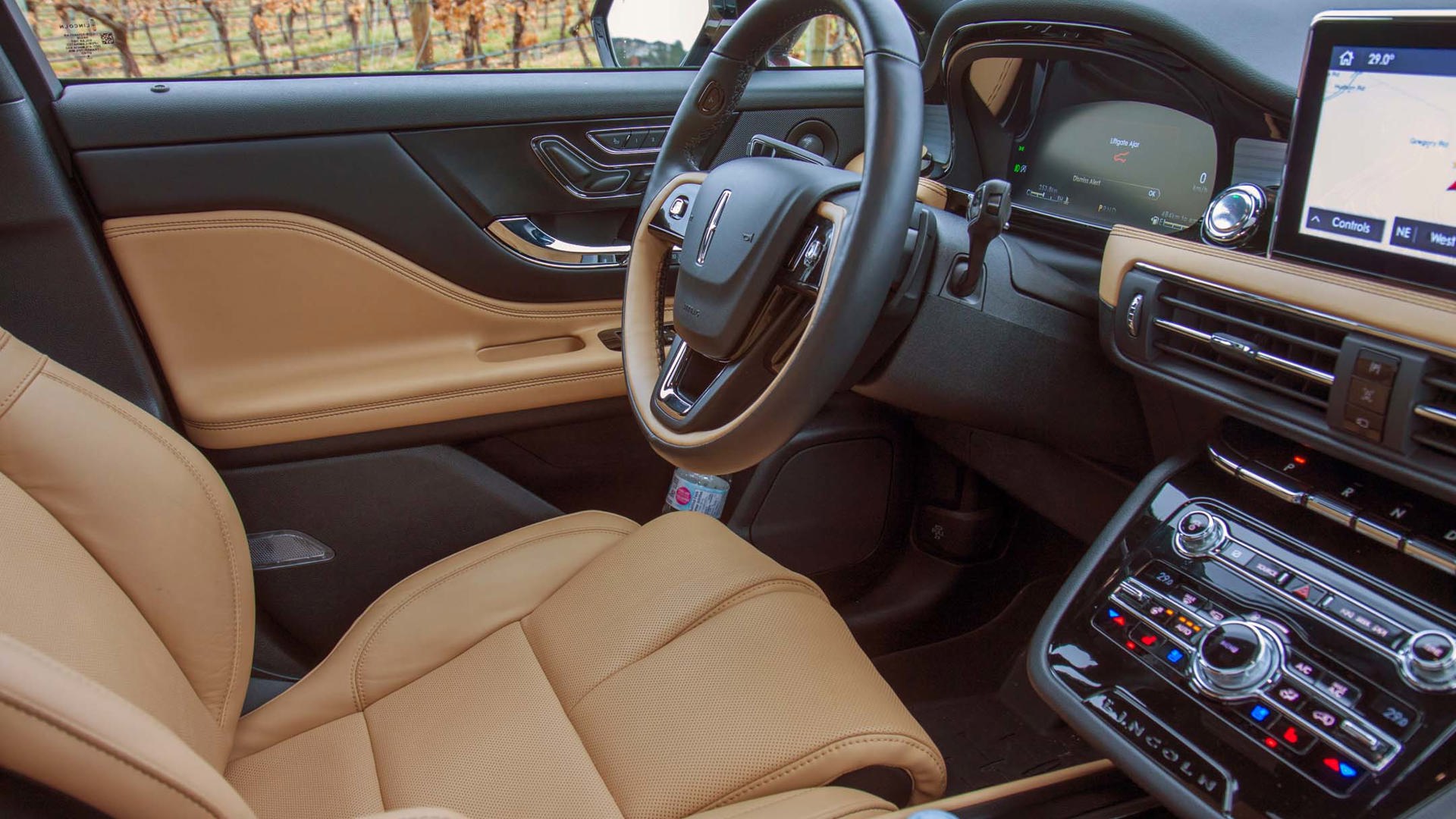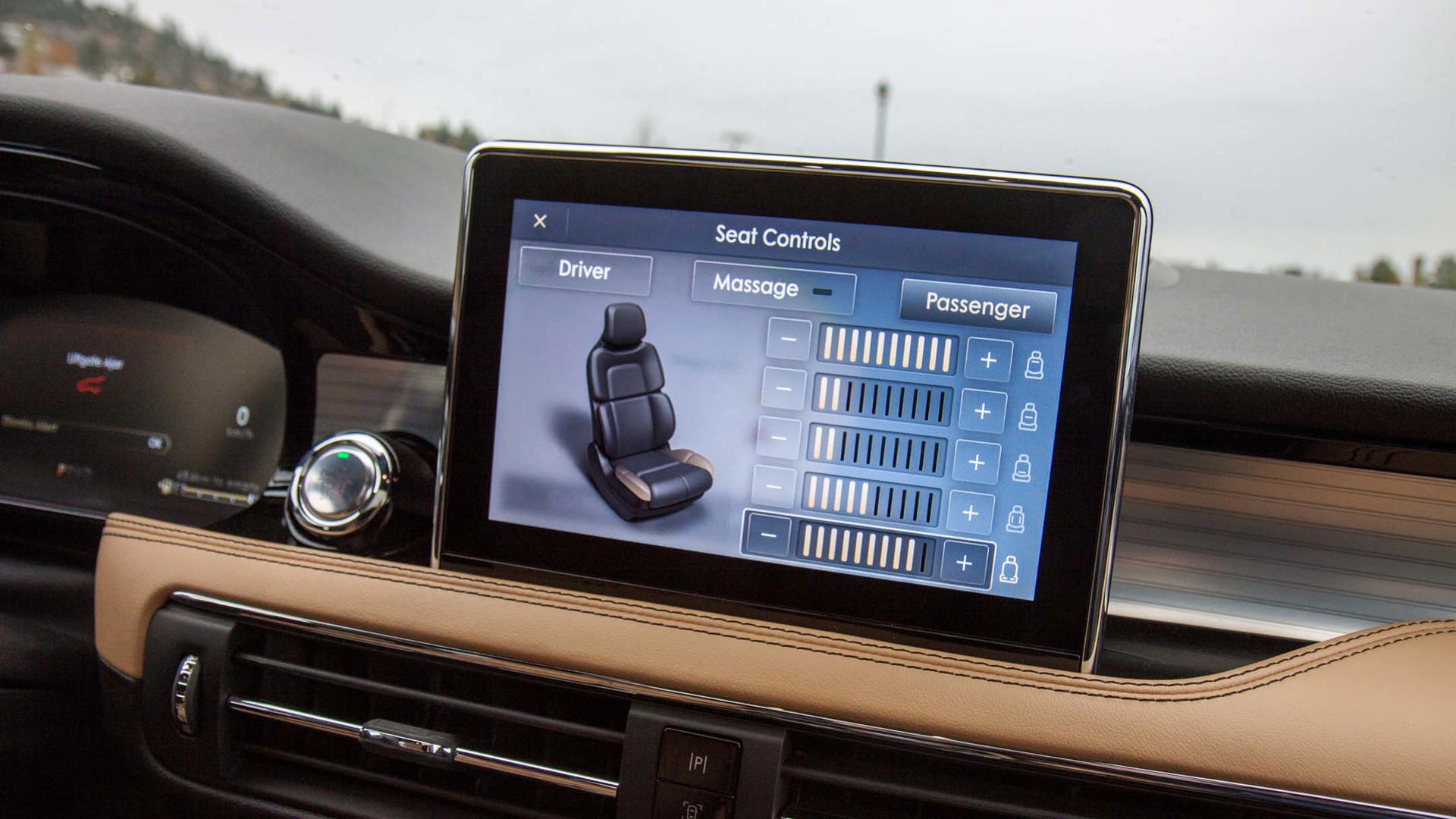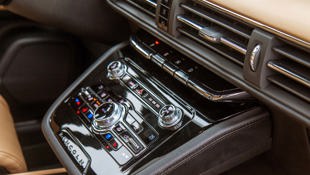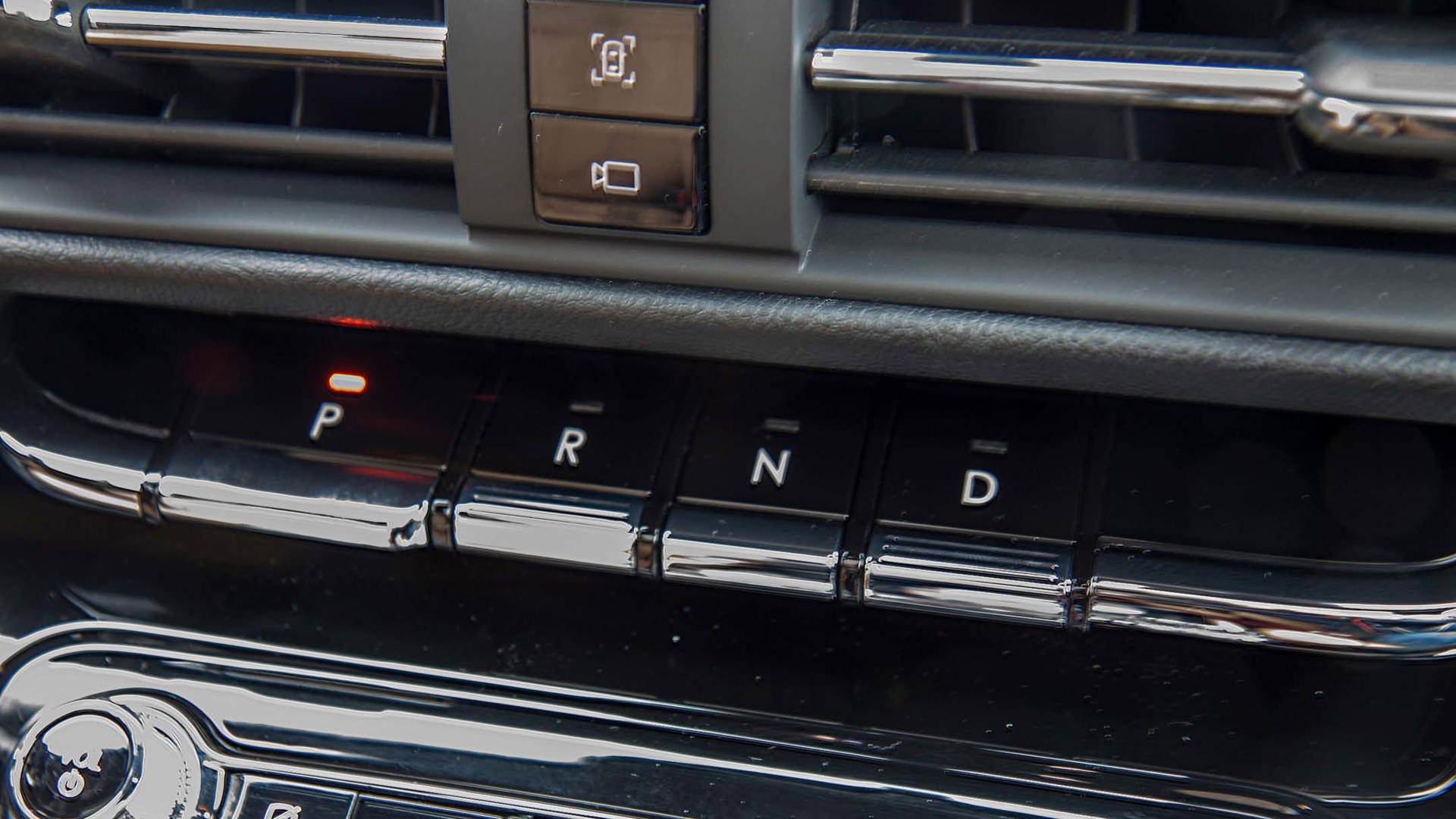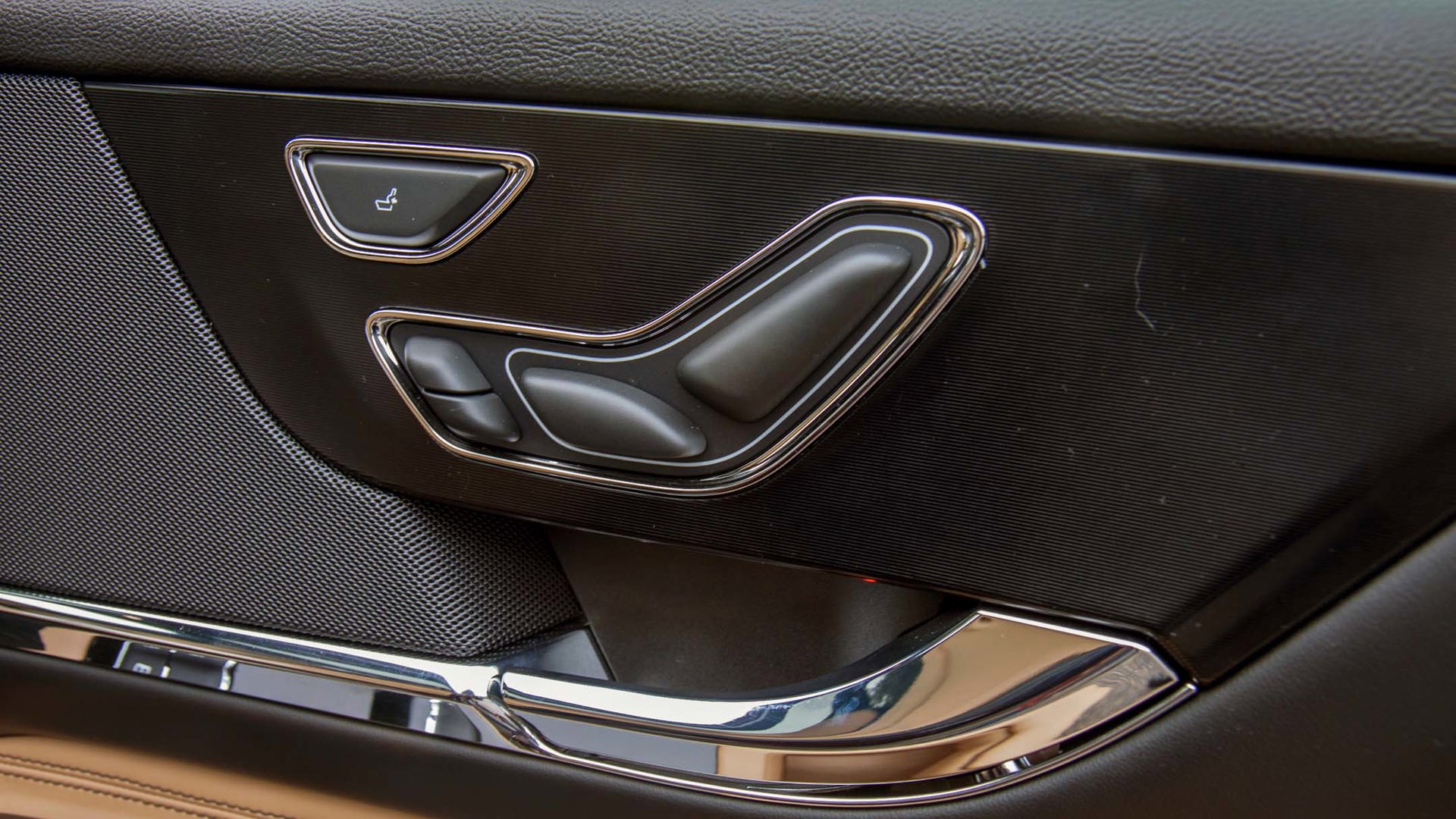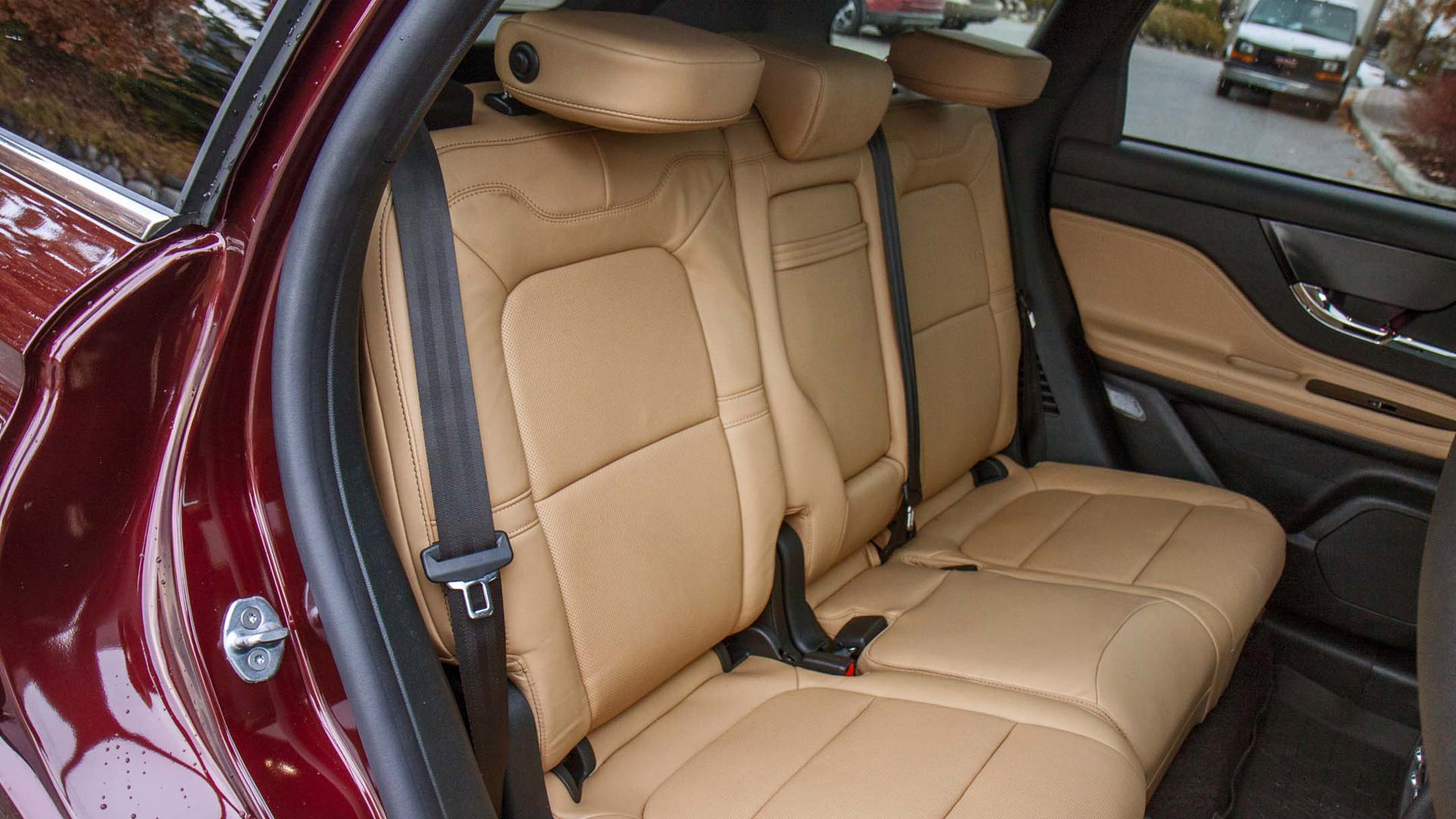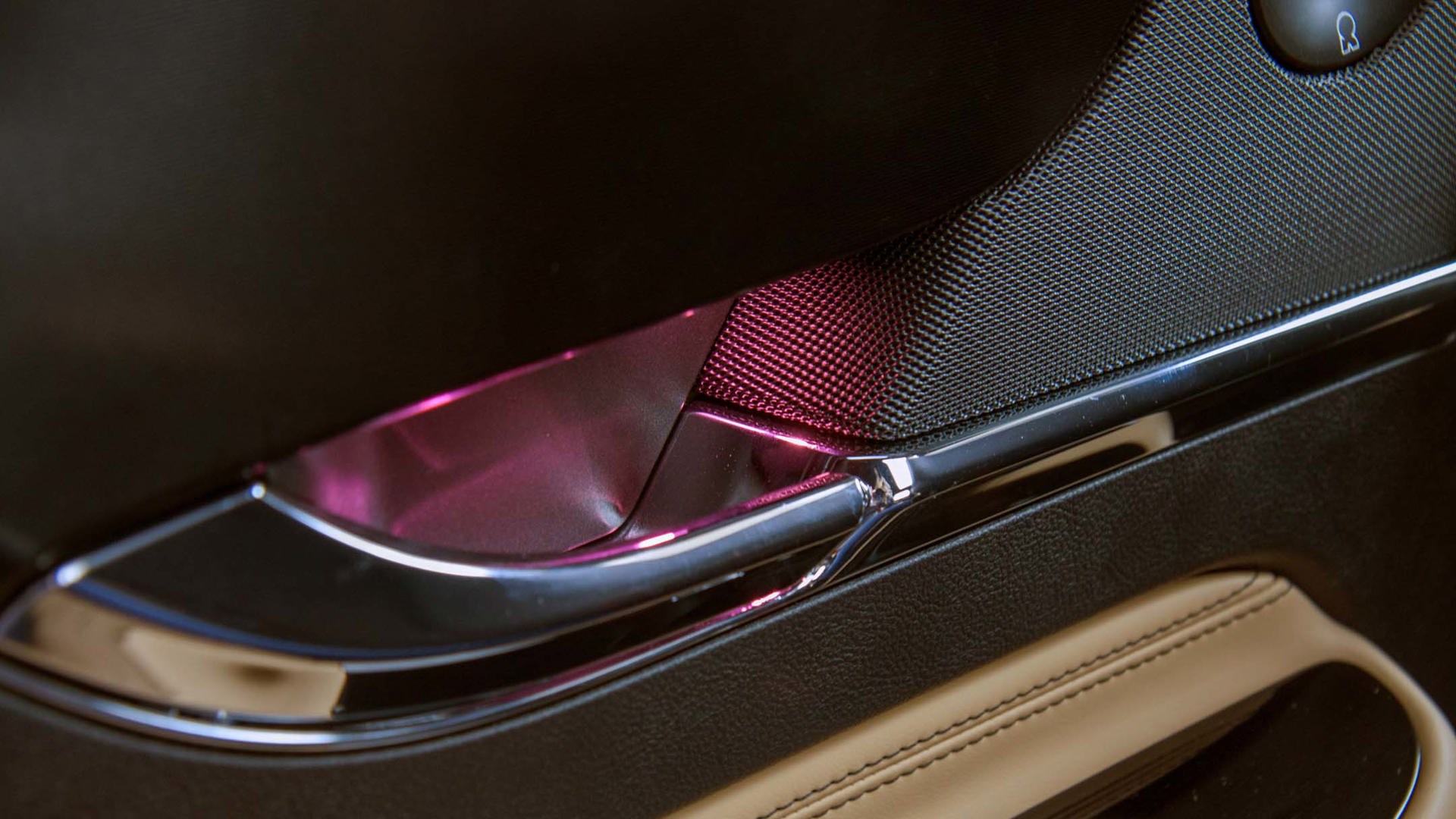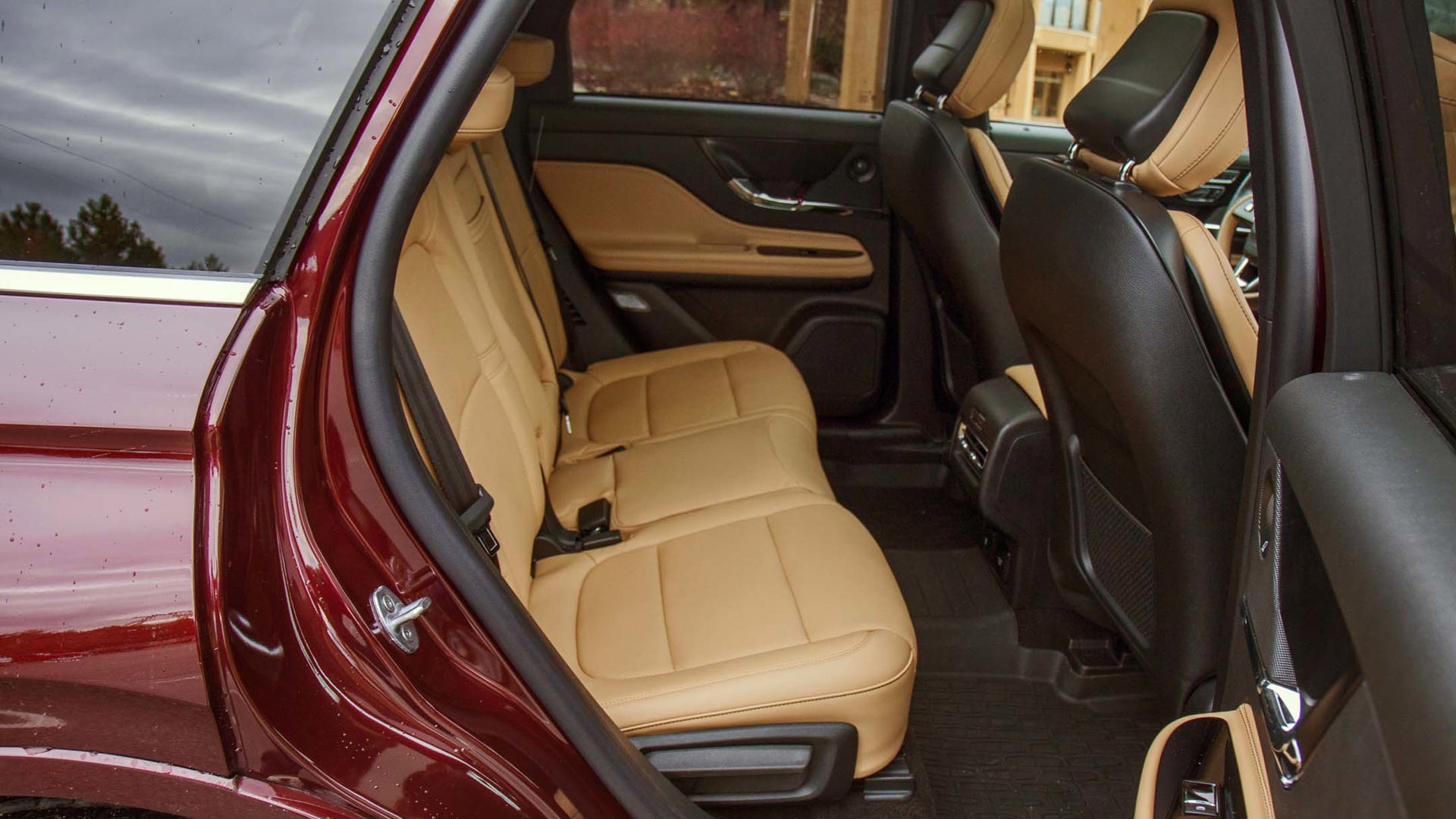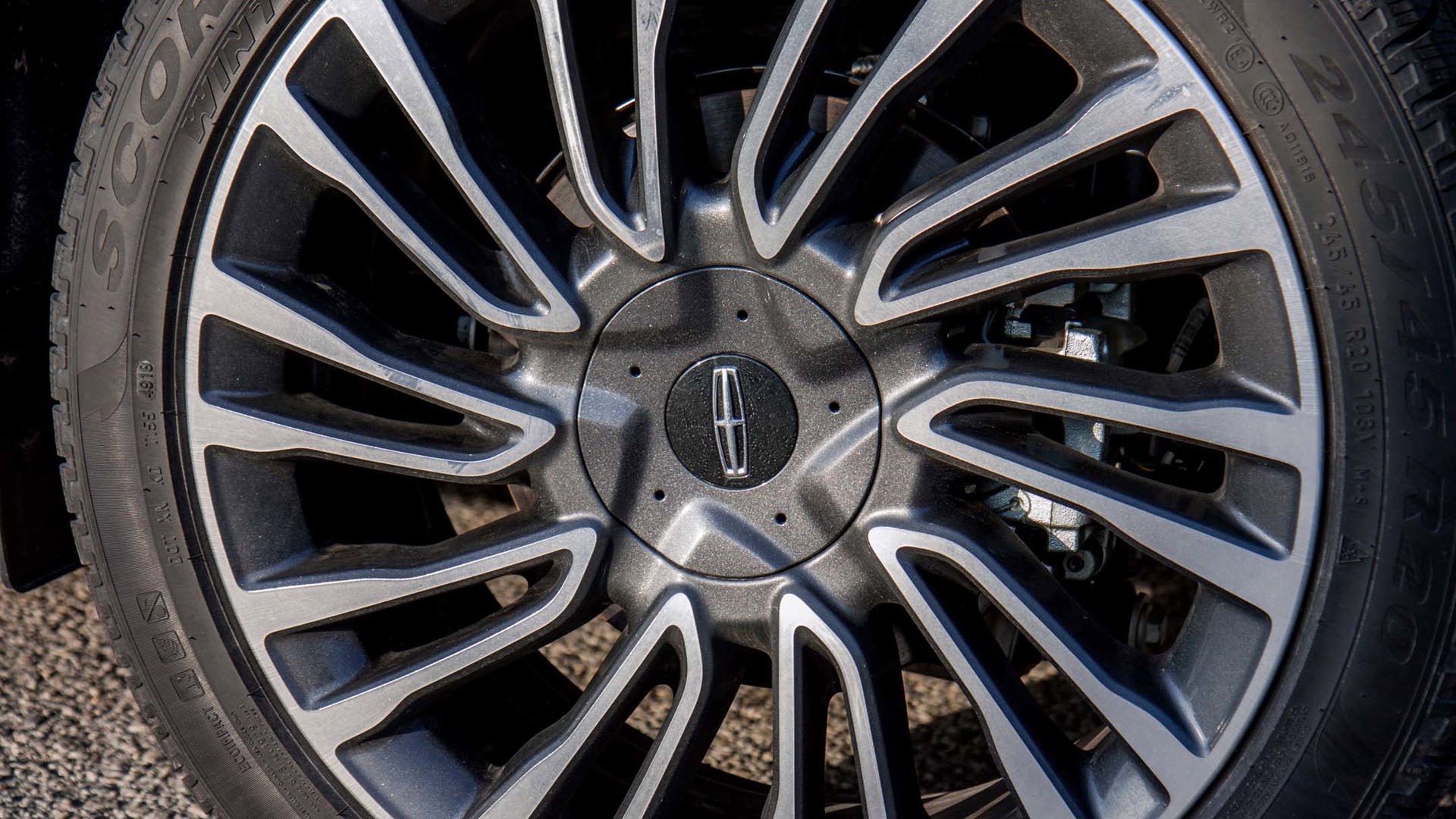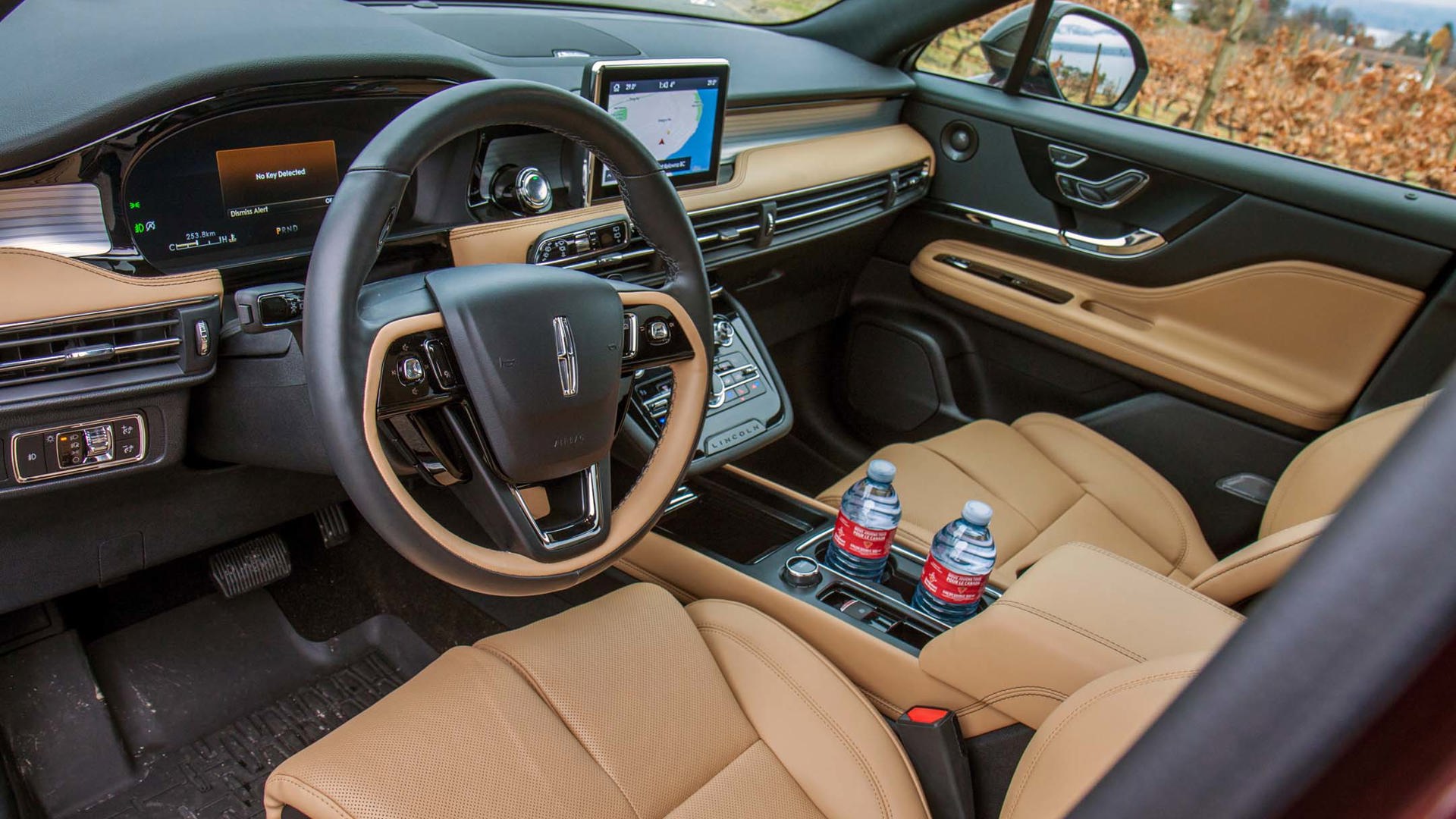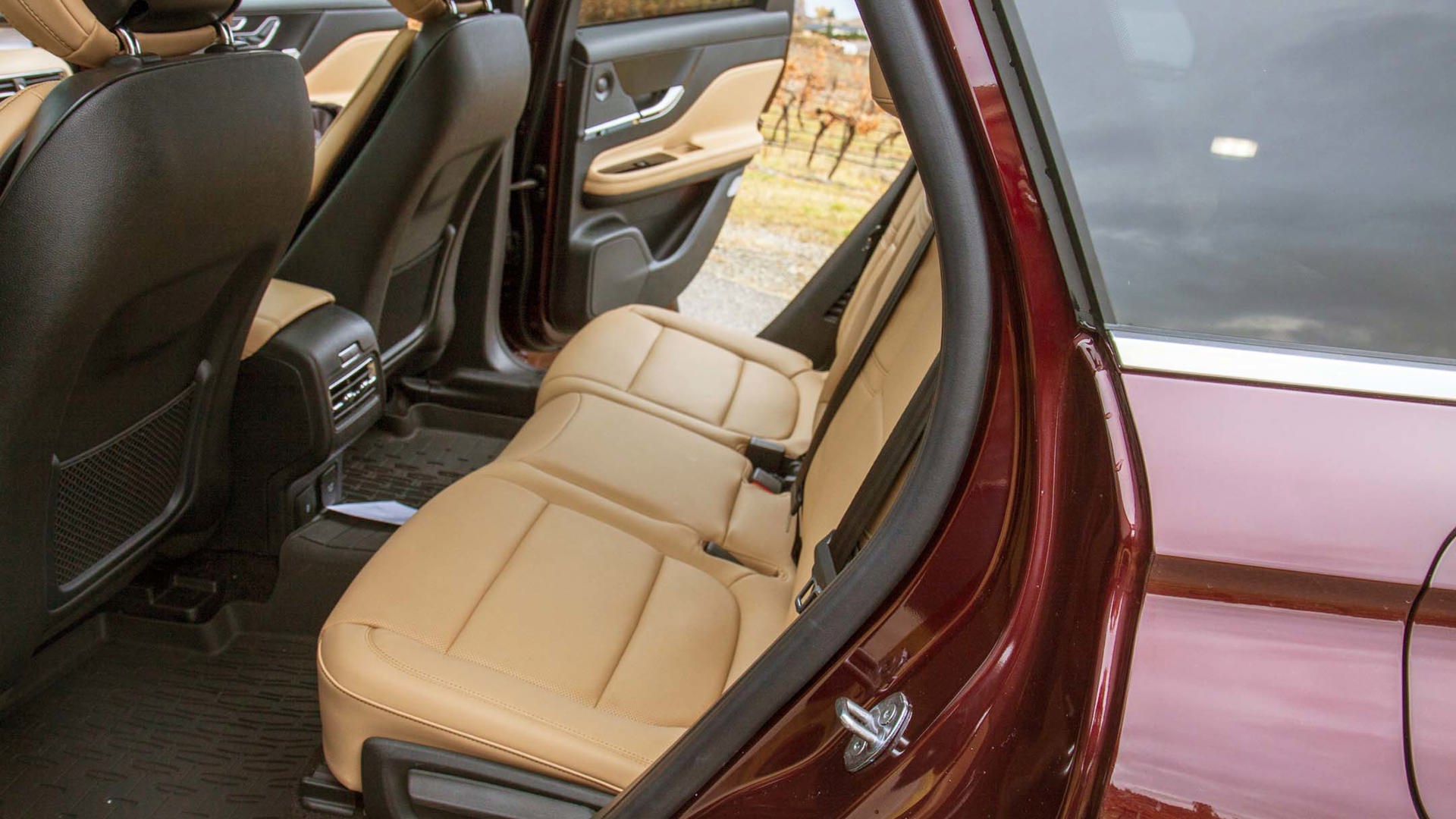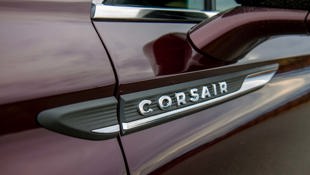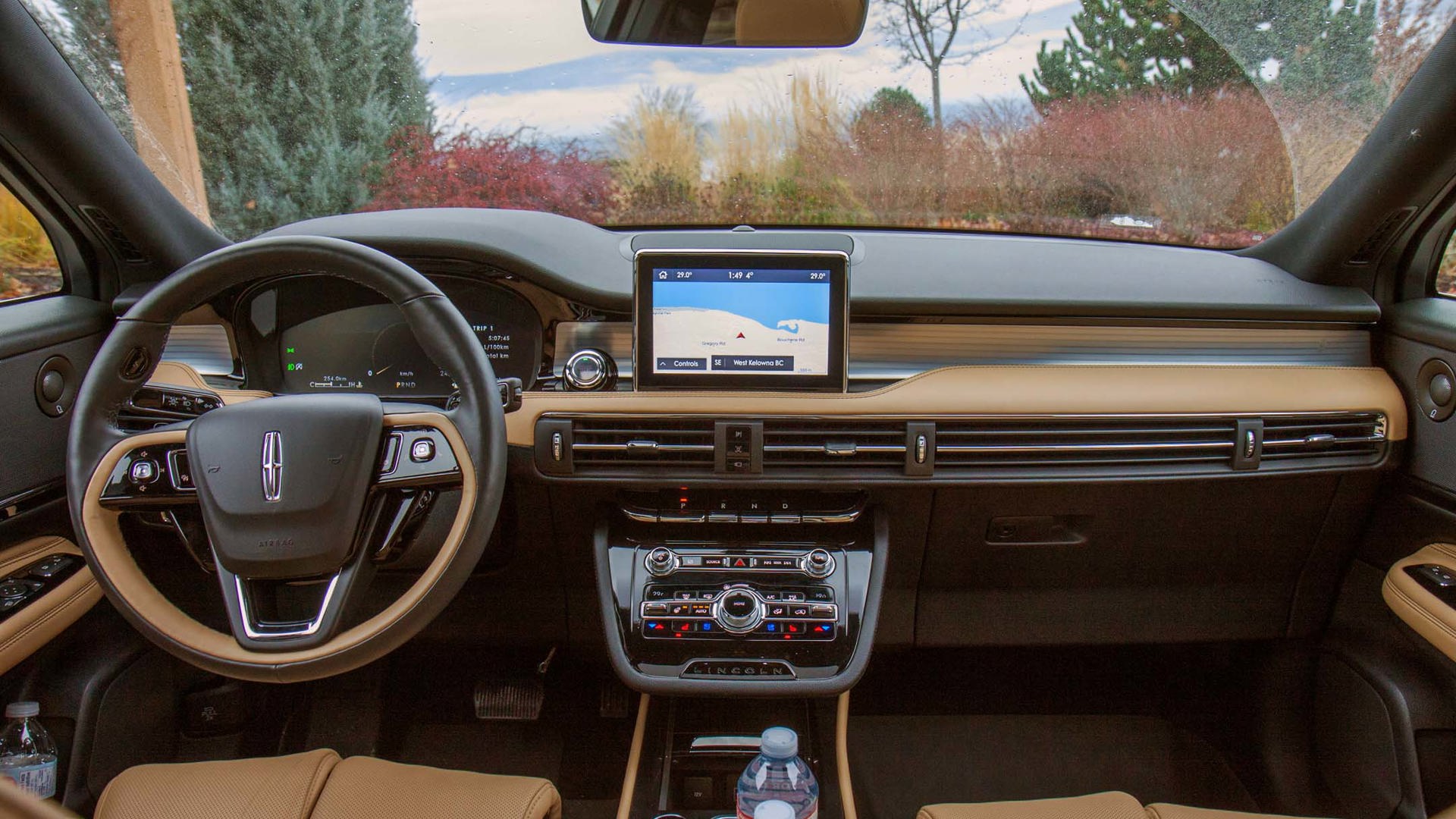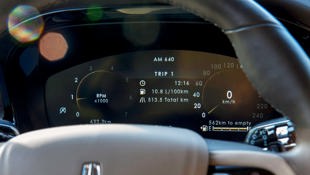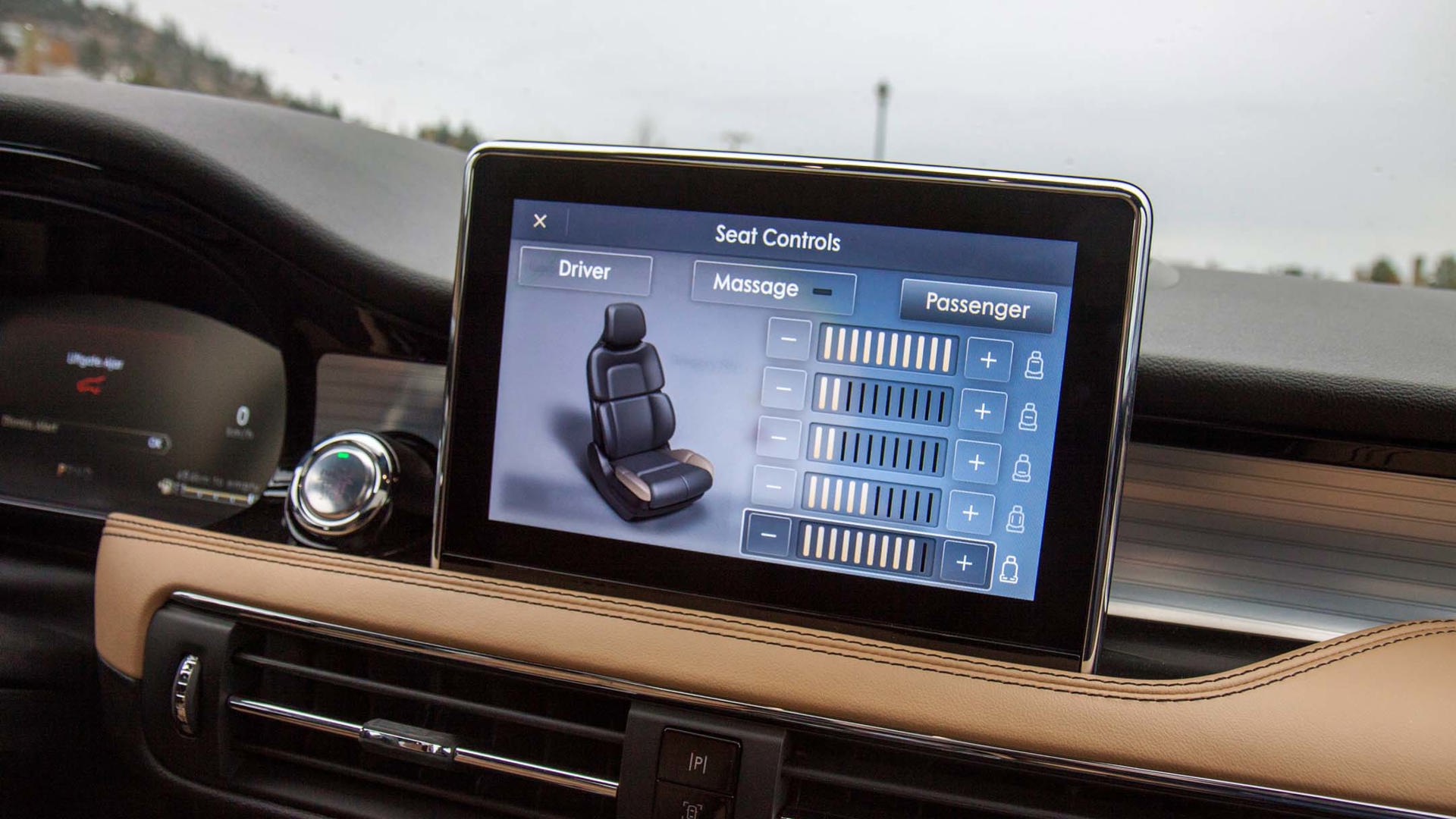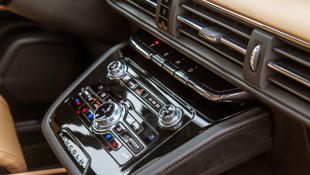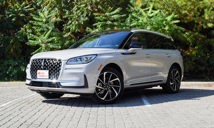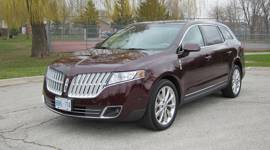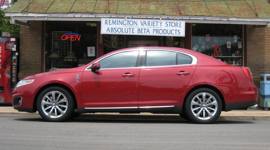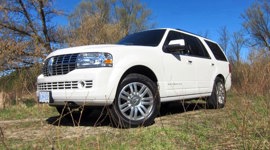OSOYOOS, BC – Lincoln, Ford’s quasi-luxury arm, is currently experiencing a revival, a Rip Van Winkle–like awakening after several years of churning out stodgy barges – outdated even as they rolled off the production line – destined straight for airport limo or rental fleets. But ditching their alphanumeric naming strategy has coincidentally spurred an injection of life into their portfolio, and particularly in their new crossover lineup. With the flagship Navigator, the elegant Aviator, and now, the new compact Corsair, Lincoln has finally come into its own as a premium luxury brand.
The Corsair, whose name is derived from a pirate’s ship, is based on the same modular platform as the new Ford Escape. But it was very clear to us after a full day touring British Columbia’s lovely Okanagan Valley in the Corsair that that’s about the only similarity they share. It may be positioned as the entry-level conquest vehicle for Lincoln, but they’ve obviously wasted no effort to ensure that it’s as well-crafted and luxurious as their most premium offerings. It has to be. The Corsair, which replaces the MKC, is Lincoln’s entry into the compact premium crossover segment, the most competitive market in the industry. If they get this right, the Corsair could very well become Lincoln’s bread-and-butter car – but it will have to go up against the likes of BMW X3, Audi Q3, Mercedes-Benz GLC, and Volvo XC40.
First impressions are good – the Corsair is a looker. Our test vehicles were all loaded, top-spec AWD Reserve models in a colour palette ranging from deep Burgundy to Ceramic off-white. Optional adaptive LED headlights frame a tasteful chain-mail-esque grille underscored on either side by a swath of LED running lights above a sliver of chrome. Subtle character lines in the sheetmetal add visual drama, and the chrome badge on its front shoulder is a nice touch. The arched roofline ends in a jaunty spoiler, beneath which the narrow taillights span the entire width of the rear deck. It’s very similar to Porsche’s rear taillight design, which along with sheetmetal divided into horizontal planes, emphasizes the width of the vehicle. A diffuser-style rear fascia with integrated dual exhaust tips finishes up the rear end. While base models are equipped with 19-inch wheels, our tester rode on flashy, 20-inch multi-spoke rims.
Comfort, ergonomics coupled with technology
Lincoln focussed a lot of attention on the Corsair’s cabin, striving to create a “sanctuary” (their words) to relax and help alleviate passenger fatigue. Attractive without being overtly flashy, our tester’s “cashew black” cabin was upholstered in rich, creamy leather with contrasting black trim. The design is predominantly simple and clean without curves or flourishes. The dash is made up of stacked, horizontal planes, finished in contrasting leather and brushed metal trim. An eight-inch tablet-style touchscreen rises from the dash, and beneath it a floating centre stack finished in piano black houses the simple knob-controls for climate and sound system. At the top of the console is a strip of gear selection buttons, which clears up space in the centre console for extra cubbies, cupholders, USB ports, and wireless charging.
Replacing traditional gauges is a single digital screen. One notable feature is the head-up display, which is clearly legible through polarized sunglasses. Lincoln achieved this by coating the windshield with a film strip that changes the light that reflects onto the head-up display.
The 24-way seats are ridiculously comfortable, plump, cushiony, and supportive, and blessed with a fully adjustable massage function. Controls are the same straightforward, door-located design used by Mercedes, with a separate button to bring up the massage and climate function on the touchscreen.
There’s a long list of new technology features available on the Corsair which includes automatic parking, and even smartphone remote parking for pulling out or backing into tight spaces, adaptive, speed-sensitive headlights, and CoPilot 360 Plus which includes evasive steering, intelligent adaptive cruise control with lane-centering and road sign recognition. For those who are constantly misplacing their keys, there’s a new app that will let you use your smartphone as a key fob to unlock and start the car. This customizable function also lets you program limits for valet parking.
Lincoln’s engineers did get a little overzealous with the child locking system, however, as a couple of us were inadvertently trapped in the back seat and neither the key fob nor the front lock/unlock buttons would open the doors. But the back seats are comfortable with plenty of head and legroom, slide six inches fore and aft to increase passenger or trunk space, and fold down (though not completely flat) to accommodate larger cargo.
The cabin is impressively quiet. Aside from laminated sandwich glass, the Corsair is equipped with noise-cancelling technology, which uses opposing sound waves through the 14-speaker Revel audio system to cancel out any wind or road noise. The firewall has an extra composite sound barrier with an air pocket between to provide further insulation. The result is a quiet environment that boasts the sort of acoustic hush associated with premium luxury vehicles.
Through the valley and up into the arid Osyoyoos desert, the Corsair proved to be a comfortable, capable cruiser. Although it shares architecture with the Ford Escape, the suspension is uniquely tuned and features an independent rear setup with upgraded bushings. The ride is supple, and compliant, and any body lean while cornering is well-controlled without wallowing rebound. The steering wheel is fat and grippy with well-defined thumb rests and ergonomically simple cruise and volume controls. Likewise, the infotainment system, which is straightforward and easy to operate. It’s a big departure from FoMoCo’s previous interfaces, which were infuriating in their complexity.
Power starting at 250 hp, AWD standard
There are two engine choices, both turbocharged: a 250 hp / 280 lb-ft 2.0L base unit, and the upper trim level’s 2.3-litre turbo-four with 295 hp and 310 lb-ft of torque. Both are mated to an eight-speed automatic transmission.
Our tester’s 2.3L four-cylinder was plenty peppy enough, and the optional drive modes and adaptive suspension can be switched to “Excite” mode for quicker responsiveness. Fuel economy is rather at 11.1 L/100 km city / 8.1 highway / 9.8 combined for the 2.0L and 11.1 / 8.2 / 9.8 for the 2.3L. We achieved 10.3 L/100 km overall.
Steering feels accurate and well weighted and though my driver partner found the brakes “grabby”, I liked the pedal’s firmness.
Our route took us through some curvy coastline roads, and “intelligent” cruise control proved an impressive driver’s aid as dusk fell and visibility reduced, keeping the car centred in its lane and a safe distance from other vehicles. Speed limit recognition can be adjusted to accommodate those who tend to drive 5, 10, 15, and such above the limit. If the speed limit is 80, and suddenly drops to 60, the system will adjust the car’s speed and allow the added “tolerance” you’ve entered onto the display screen.
Though other markets offer front-wheel drive, all Canadian Corsairs are AWD only. The base Corsair starts at $44,700, and the Reserve at $50,000. Prices climb dramatically with options: The Equipment Group (Elements Package, Lincoln CoPilot 360+) is $4,100; and the loaded Equipment Group (Elements Package, CoPilot 360+, Technology Package, adaptive suspension, 24-way seats, 2.3-litre engine) is $11,350. Our tester rang in at $68,175 including destination – a rather staggering price for an entry-level compact vehicle. Still, it features tech and options not offered by some of its competitors – which may help set it apart in this über-competitive segment.
2020 Lincoln Corsairs are arriving in Canadian dealerships now.
